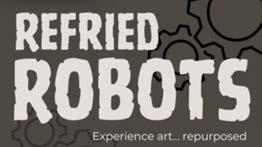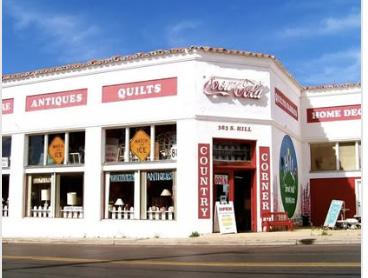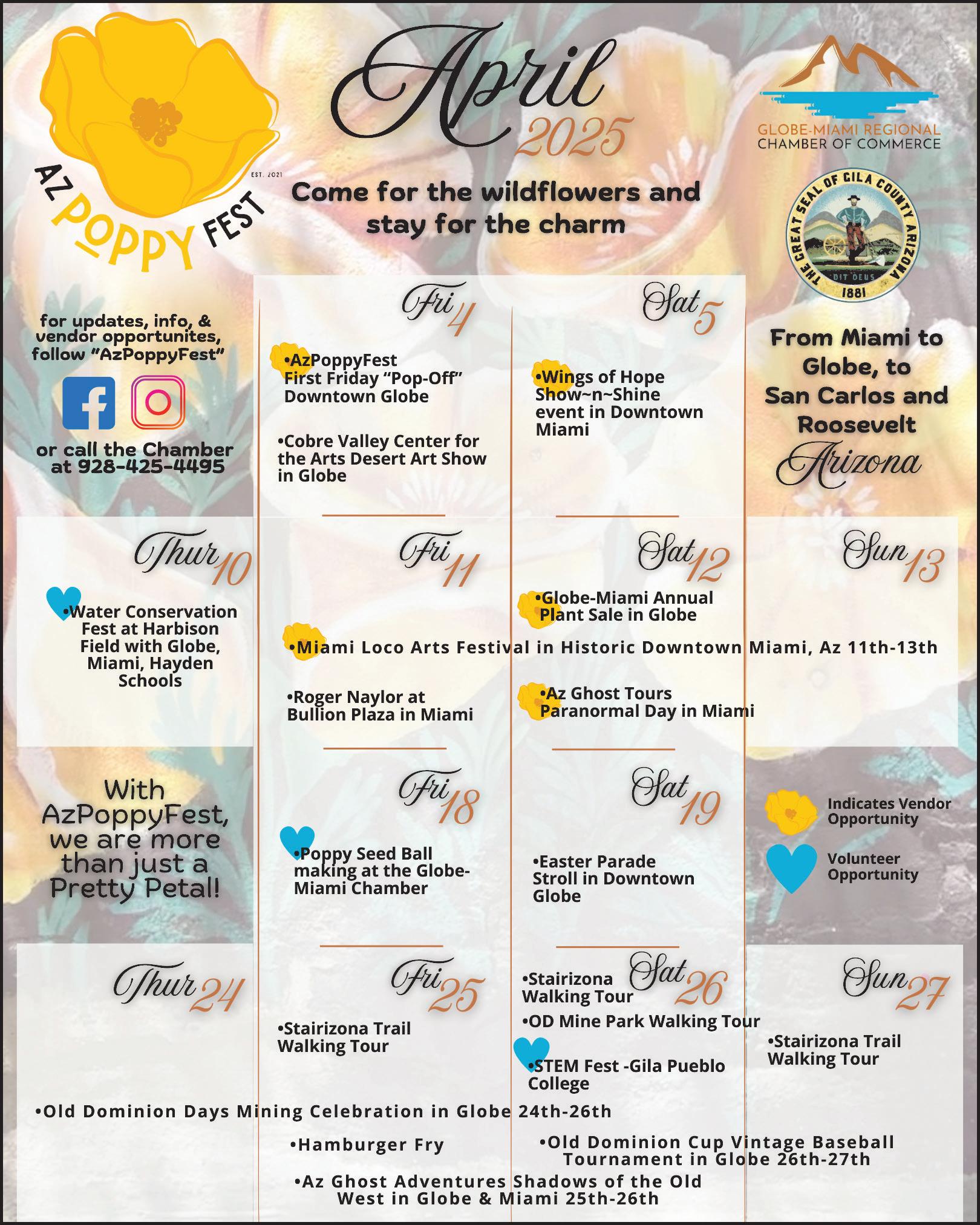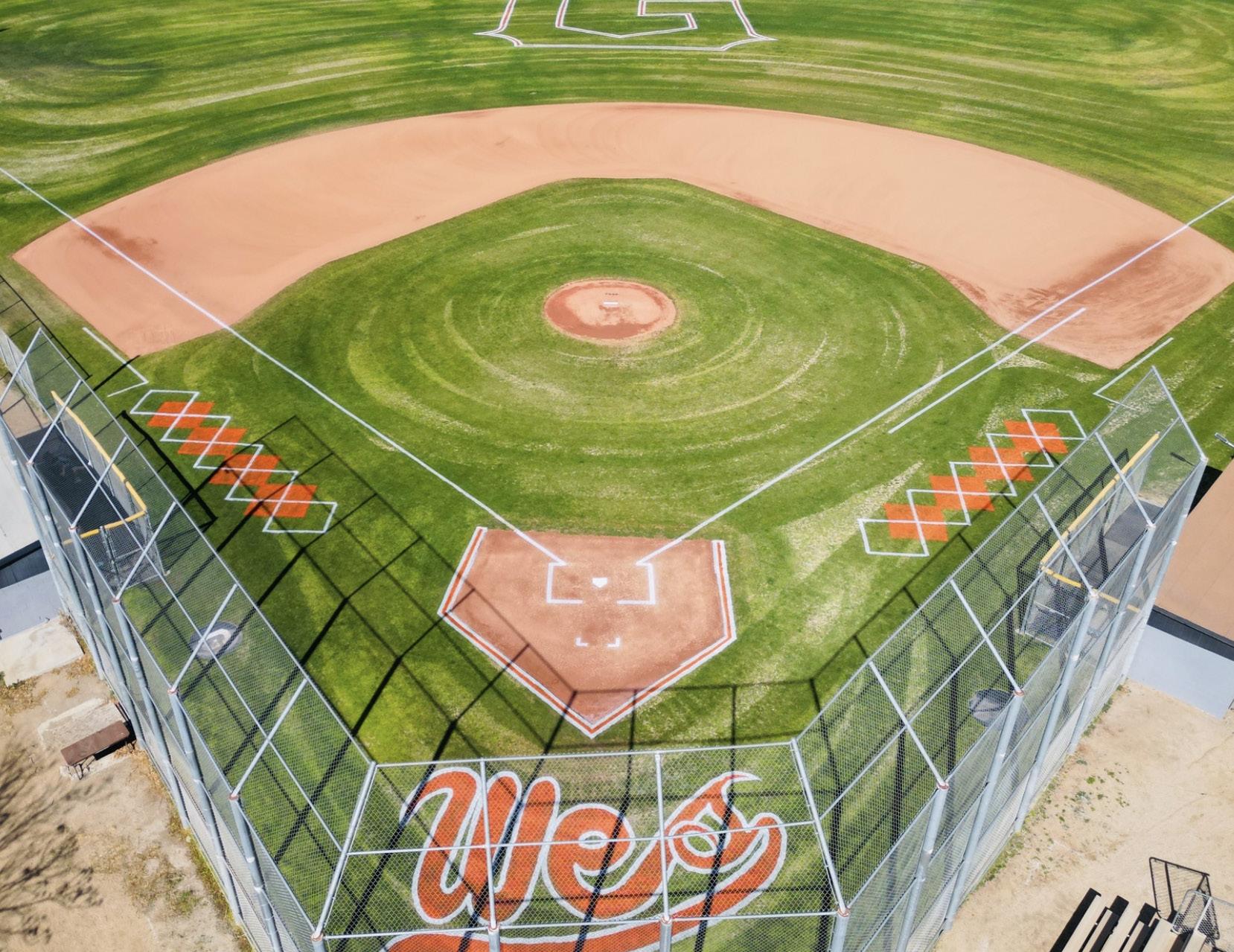








By Patti Daley
Wes Sukosky maintained Central Field for 12 years before he was offered part-time pay.
“This was all dirt. Weeds. Trees – not the beautiful kind,” says his son, Jonathan Sukosky, surveying the pristine field and practice area at 529 Mayss Street in Globe.
Today he is Head Groundskeeper for the Globe Unified School District, and Central Field in Globe has been named Field of the Year in 3A South Central for four consecutive years.
As a high schooler, Jonathan and his father and a few ballplayers would come to Central Field on Saturdays and work together to maintain it.
“He initiated a lot of pride in us, in what we had, so that’s why we’d all take care of it,” Jonathan says.
There’s a lot about the field that makes it special. The history. The minor league ties. All the guys that stood on this dirt. Tucked inside a neighborhood, it’s got a view of the Copper Hills and diamond-shaped clay around home plate.
Last year, Central Field received national notoriety with a Pioneer Athletics Field of Excellence award.
“To me, that’s awesome,” says Jonathan. “It’s going to be the best thing because it was the last thing we did together.”
Wes Sukosky died on December 29, 2024, at age 57.
To honor his father’s contribution to the community of baseball and, specifically, Central Field, Jonathan designed a Wes logo and will paint it on the grass behind home plate throughout the 2025 season.
FIELD OF DREAMS, Continued on page 10

By David Sowders
In 2025, three girls represented Globe-Miami in the Arizona high school wrestling tournament – in just the second year of girls’ wrestling as a separate program.
“It’s a brand new sport for almost every school in Arizona,” observed Globe High School head coach Isaac Mitchell. “Last year the Arizona Interscholastic Association wanted girls’ wrestling to be its own thing, so they set up a statewide program.”
The game-changer might have been a Tucson student, Audrey Jimenez of Sunnyside High School, who won a state championship in the boys’ division. “I think that was a major driver in coming to the decision to have a separate girls’ program,” said Mitchell. “It seems like a lot of the rules started changing when she showed up.”
This season, Globe High School junior Isabel Rascon-Perez earned a spot in the girls’ wrestling state championships by taking first place in the sectional tournament, held February 8 in Phoenix – becoming the first girl from Globe to win sectionals and to qualify for the state tournament. Rascon-Perez achieved those milestones after missing state by one match last season.
WRESTLING, Continued on page 20



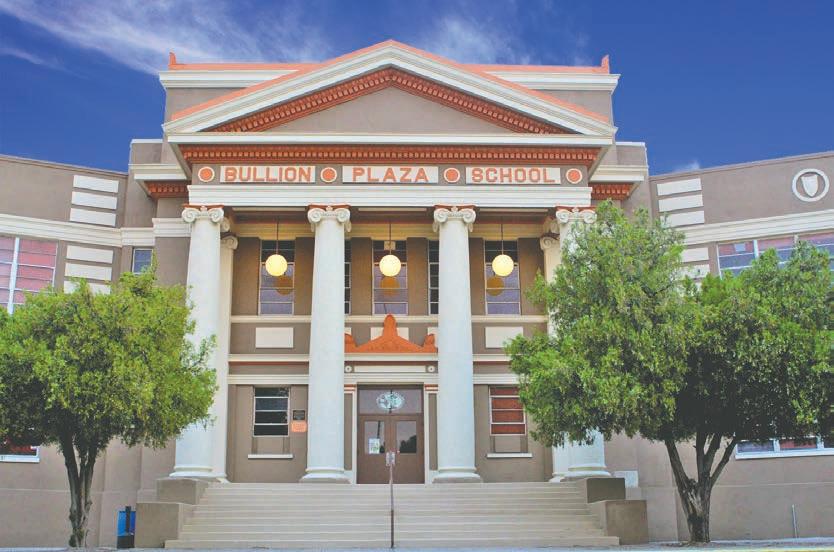




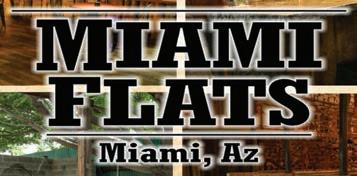

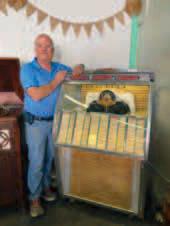







Publisher
Linda Gross
Editors
Patricia Sanders
Jenn Walker
Creative Designer
Jenifer Lee
Contributing Writers
David Abbott
Patti Daley
Linda Gross
David Sowder
Jenn Walker
Contributing Photography
Linda Gross
David Sowder
Jenn Walker












175
editor@globemiamitimes.com www.GlobeMiamiTimes.com
Advertising
Artwork
Display
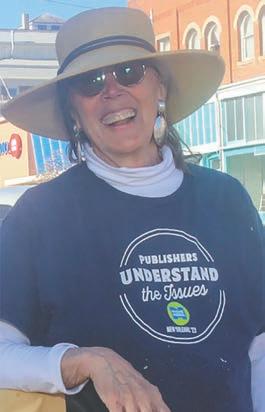
This month, we bring you inspiration—stories of achievement, passion, and the people in our community making history in real time. From wrestling mats to ballfields, and from state championships to historic tournaments, the stories in this issue reflect both the history being made today and the history we continue to honor
Our cover feature highlights girls’ wrestling, a growing program in both Globe and Miami, proving that talent and determination can break new ground. In just its second year, the program has already produced top athletes, including Isabel Rascon-Perez, who took first place at sectionals and is heading to state competition (p.1).
Another story of dedication and legacy unfolds at Central Field, where Wes and Jonathan Sukosky transformed a dirt lot into a ballpark worthy of the big leagues. Their hard work and shared passion earned national recognition and solidified Globe as a destination for Arizona Territorial League play (p.1).
And let’s not forget a huge milestone for the Miami Vandals girls’ basketball team, who claimed the State Championship this year! Their victory will no doubt be remembered in the Miami Vandals Sports Hall of Fame, inspiring future generations of athletes (p.26).
This month also brings a special pull-out section (pp. 11-18) dedicated to the 9th Annual Old Dominion Days, happening in late April. With historic mine tours, walking tours, special lectures, and the highly anticipated tournament play of the Arizona Territorial Base Ball League, this event is a celebration of Globe-Miami’s rich mining and baseball heritage. Whether you’re visiting for a day or a full weekend, there’s something for everyone to experience.
History is shaped by the choices we make and the legacies we leave behind. While we often live in the moment, our actions and accomplishments define how our stories will be told in the future. This issue is a testament to those who are building, competing, preserving, and achieving—writing the next chapter of Globe-Miami’s history
We hope you enjoy these stories and find your own inspiration in the pages ahead.
Linda Gross, Publisher


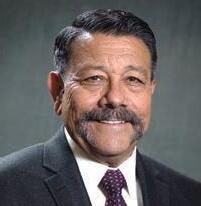
School Apartments, and Waggin Vineyards.

WATER SUSTAINABILITY STUDY: On February 5th, a special scheduled Council meeting was held to hear the results of a City of Globe Water Sustainability Study that was completed by MatrixNewWorld Engineering and presented by Steve Nowell and Paul Hendricks. The study is vital to our city as we continue to plan for the future growth and sustainability to assure an adequate water supply. This data will be incorporated into our City Master Water Plan that can be used by our staff for ongoing upgrades and maintenance and for investors and developers that are interested in bringing their projects to our community.
The city draws water from the Cutter Basin Aquifer where we have five active wells. Under the agreement with the San Carlos Apache Tribe, the City of Globe is limited to 2,500-acre feet per year annual average of pumped groundwater from the Cutter Basin. In 2024, the city’s water demand was at 1,400-acre feet, about 56% of the allotted amount. The city currently has approximately 3,500 water connections that are serviced from this water source. These numbers convey that the remaining allotted acre feet allow for future demands and development growth. The final part of the study was recommendations for a maintenance schedule, system upgrades, and budget estimates.
ANNUAL STRATEGIC ACTION PLAN: This year’s Strategic Action Planning Retreat was held on February 13th. The theme for this year’s SAP was called “Alignment – Charting the Course for Success”. Our Mission Statement is: In today’s
dynamic environment, aligning our organizational goals and priorities with available resources is crucial for sustainability, growth, and success. This retreat aims to foster collaboration, enhance communication, and update the SAP to ensure that our resources are effectively utilized to meet our objectives.
This year’s retreat, again gave the opportunity for Council and Department Directors to review the status of ongoing projects and future projects. Council was able to reinforce their vison and goals as we continue our planning for the next year and beyond. Having a clear and well-defined plan allows us to give clear direction to our City Manager on implementing the next fiscal year plan with staff. The retreat also gives council and staff the information needed in preparation of the budget process. Thank you to our staff for all the hard work and dedication performed on a daily basis to provide excellent service and build that sustainable economic base for the future of our city.
On February 21st, former Mesa Mayor John Giles came to Globe with a film crew as part of a statewide series of “Lunch With The Mayor” that is funded by Local First Arizona. This series was created as a way to spotlight several Mayors of Arizona and the communities they represent and what makes their cities unique. It was an opportunity to highlight our city with all the restaurants, bars, businesses, and attractions we have to draw tourists to come and visit. We were able to highlight the variety of food options we have and visited and filmed places like Cobre Valley Center For The Arts, The 1910 Jail, the Catholic


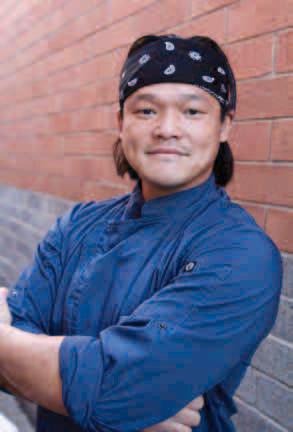
Thank you to John Wong and Bravo for hosting the event for lunch. You have served as an anchor to our downtown historic district to increase foot traffic and additional business attraction.
HILL STREET SCHOOL THREE-WAY STOP:
The stop signs at the intersection of Hill Street and Maple Street at the Hill Street School Apartments have been installed as part of the results of a traffic study that was completed at the end of 2024. The stop signs are very visible with solar lighting and an enhancement of the crosswalks for the safety of the public and student crossing. Our Public Works department is currently finalizing the design upgrades to the new transit bus stop at the intersection of Hill Street and Maple Street. The Safeway transit bus stop has officially been changed to the Hill Street School location for pick up and drop off.
According to the manager, Debra Espinoza, there are only a total of 13 units left and that all of them are for seniors, 55 plus that qualify. They are currently offering a special on these units until they are filled. The special is the first month free rent and $100.00 in groceries. For more information, contact Debra at 928-255-5605.
COFFEE WITH THE MAYOR: This month’s Coffee With The Mayor is scheduled for March 19th at 1 pm, at Copper Cities Coffee, 1100 N. Broad Street, Suite F. This is an opportunity for residents to attend and ask questions and get the most recent accurate information about any city projects in progress or pending. This event will continue every third Wednesday of the month at 1 pm. Thank you again to Copper Cities Coffee for hosting this event.








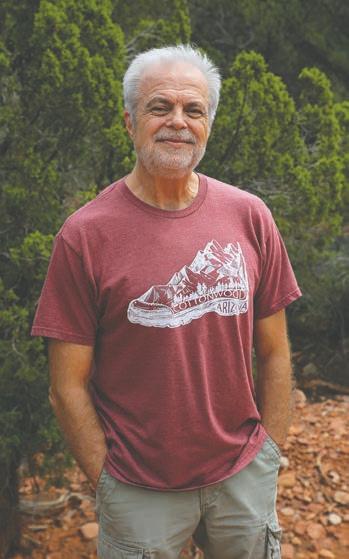

By Jenn Walker
“The dean of Arizona travel writers” is making a stop in Globe-Miami, coinciding with this year’s AZ Poppy Fest, a celebration of spring and its flowers throughout the entire month of April in Globe-Miami.
Roger Naylor – an Arizona-based writer and hiker who has written about his travels throughout the state for the last 20 years, and self-described wildflower fiend – will speak for the first time ever at Bullion Plaza Cultural Museum on April 11 in part of one of numerous events held for the festival.
Naylor has been a full-time Arizonan for the last 30 years, and one of his defining traits is that he makes every effort to get to each corner of the state as often as possible. In his travels, he has passed through and written about Globe-Miami many times. Over the years, he has written for Arizona Highways, Arizona Republic, The Guardian and USA Today. He is a member of the Arizona Tourism Hall of Fame and has authored more than a dozen books, all based in Arizona.
For the last 10-plus years, he’s been tasked with writing about wildflower season for Arizona Republic, which has included writing about the likes of Globe, Miami, and Peridot Mesa.
“There is something magical about, especially the poppies, I


think, of all the desert wildflowers,” Naylor says. “Sometimes you’re disappointed and sometimes you’re just wowed by a sea of poppies spilling across the desert floor. They’re just blazing in color, like a satin fire. So I always admit, I’m completely poppy-whipped.”
He adds: “I tell people, even during the years when the poppies aren’t going to be so much in the desert, you can still find them in Globe and Miami… so I’m looking forward to being up there and hope there’s some blooms during my visit, and if not, I’ll still have a wonderful time.”
Naylor’s presentation at Bullion Plaza will focus on his latest book, Arizona National Parks and Monuments, an extensive travel guide that delves into 34 different national parks and monuments throughout Arizona, which he deems “crown jewels” of our state.
Naylor anticipates winding down his career, including public speaking, within the next couple years so he can enjoy a more retired lifestyle, so this will be an opportunity not to miss!
Naylor’s presentation at Bullion Plaza will be held Friday, April 11 from 6:30-7:30 p.m. Free to attend. Talk accompanied with Q&A. Books will be available for purchase, along with signed copies. Hot coffee and cookies from Round Mountain Baking Co. will also be available for purchase.For more information about Roger Naylor, visit: Rogernaylor.com
For information on AZ Poppy Fest, make sure to follow AZ Poppy Fest on Facebook. For any inquiries, you can Facebook message the Globe-Miami Chamber of Commerce, call at 928-425-4495, or email: visitorinfo@globemiamichamber.com.


“Quality

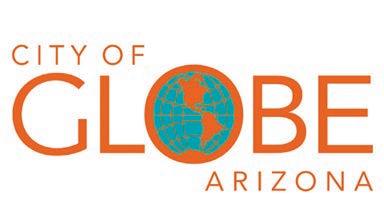

By David Abbott
Globe City Council recently concluded its Strategic Action Plan update, focusing on the “four pillars of community wellbeing”—public safety, infrastructure, quality of life, and financial sustainability— as they prepare for the 2025-2026 budget in the coming months.
The SAP acts as a guide for Council’s future agendas and is created through a collaborative process with participation from all Council members. As part of this process, SAP groundwork is divided into four workgroups representing each of the pillars, making the process easier to negotiate.
One of the most important aspects of the SAP, and a central function of municipal government, is public safety, comprising police, fire, and magistrate court.
Like Globe’s physical infrastructure, including water and wastewater, streets and sidewalks as well as parks and other amenities meant to improve citizens’ lives, Globe’s police and fire departments are built on foundations that are often nearly as old as the City itself.
The Globe firehouse is more than 100 years old, but some of its equipment is also approaching obsolescence.
Not only is the GFD charged with protecting the 7,300-odd residents of the City of Globe, it also shares responsibility with other agencies to serve a wider population as first responders to the 29,500 residents from surrounding areas as well as tens of thousands of travelers—as many as 97,500 overnight visitors annually—according to the most recent Economic Impact of Travel report by Dean Runyan and Associates.
In 2021, the City was able to leverage funds to purchase a Type-3 wildland fire engine capable of handling extreme situations in the washes and mountains throughout the region as well as those within the city proper. But the Department still has many needs to be addressed in order to modernize operations.
As part of the Capital Improvement Plan (CIP) funding process, Globe Fire
Chief Gary Robinson gave a presentation to Council on February 11, outlining the need and the cost for a new ladder truck for the Department as the City’s longrange planning continues.
The need for the new vehicle comes in the wake of the forced-retirement of Globe’s previous aerial ladder truck. The 32-year-old piece of equipment failed a recent third party inspection required for all aerial fire apparatus.
This inspection came with the recommendation that the unit be completely refurbished or replaced.
Given the 32-plus years of service this apparatus has already provided along with the difficulty in acquiring parts, refurbishment is a cost prohibitive move with a very limited return for the investment.
“We’ve done everything possible to try to keep that [vehicle] on the road and operational,” Robinson says. “But there’s only so much that can be done when it comes to keeping that equipment serviceable and useful.”
He pointed out that in addition to difficulties with basic repairs, the changing face of the City of Globe and responsibilities through a “Mutual Aid Compact,” having modern equipment is more important than ever.
The Compact requires signatories to provide support to other agencies in the event of emergencies, such as floods, wildfires or other unforeseen and unexpected disasters.
The Department must also meet Insurance Services Office (ISO) requirements that affect the cost and ability of residents and businesses within the City to purchase necessary insurance.
Among the requirements affecting Globe are the existence of five or more 3-story buildings in the city—with more on the way—and the need for sufficient water volume to meet our larger fire flow requirements. Additionally, the existence of special facilities, such as nursing homes, senior housing, high occupancy buildings and industrial facilities

necessitate the capabilities this type of apparatus provides.
Given the terrain and weather patterns in the region, the GFD also has to be prepared for dangerous operations including swiftwater or high angle rescues.
“Your equipment is part of it, but there’s so much associated with ISO: Your training; your communication; your water supply, your mutual aid agreements,” says Mayor Al Gameros. “There’s a lot to encompass, but the only thing that we can control with apparatus is making sure that our equipment remains 20 years old or less, because that could affect our
insurance rates.”
The ladder truck will cost in the neighborhood of $2.4 million, but even after the new truck is purchased, there will be issues with storage when it is not in use, due to the limitations of the GFD’s 100-plus-year-old firehouse.
One of the highest-profile projects the City is focused on is building a new and modern firehouse on East Ash Street to replace the building it shares with the Globe Police Department across from the Municipal Building on Pine Street.






The cost of the project is now estimated to be about $13.5 million. The new facility will be state-of-the-art both technologically and environmentally, with a focus on the safety of Globe firefighters and an eye to improved recruitment and retention of employees in the future.
Council hoped to bring in grants and low-interest loans from the USDA, but given the changing state of federal funding, the City may have to go with more “traditional” means of financing, such as bonds or other forms of borrowing.
The proposed fire station would not only modernize the Department and help with staffing, but it could also become an important feature in the Globe community.
Councilmember Mariano Gonzalez spent 26 years in emergency management statewide, both as Director of Emergency Operations for Gila County and as the State Emergency Response and Recovery Plan Coordinator at the State Division of Emergency Management
He has seen both the importance of being prepared and fully staffed, but also how public safety infrastructure can be an asset to the community. Gonzalez says that during his tenure with the County, he watched as the City of Payson built its main fire station and how it became a central gathering place.
“Suddenly, Main Street was a hub: They hold public meetings there, FEMA classes are being offered, and there are other entities using the conference room,” Gonzalez says. “It’s going to help with the firefighter retention too, because they’re going to be in safer circumstances in a modern facility. Our firehouse is 100 years old. That sounds great for a museum, but it’s not a museum right now, it’s an actual fire station.”
The new station would also improve the long-term health of firefighters, with
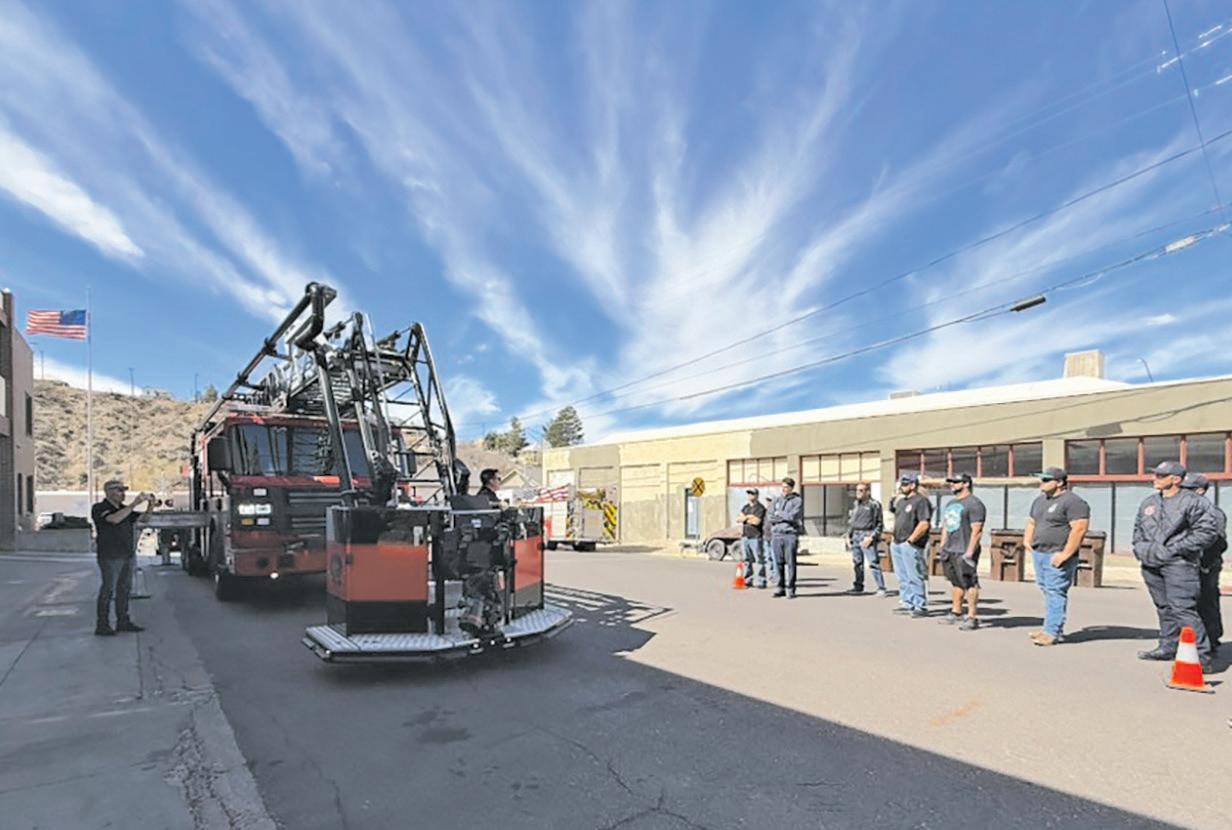


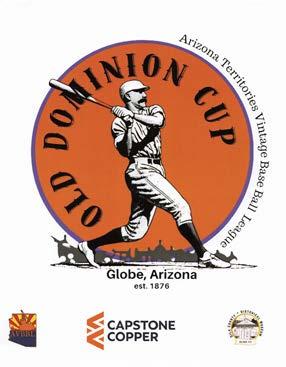

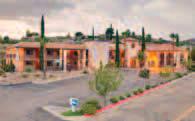


By Jenn Walker
Miami High School’s FFA program has grown and progressed significantly since Miami Jr./Sr. High School’s agriculture instructor and Future Farmers of America (FFA) Jimmy Crosby’s arrival at the beginning of the 2023 school year.
Since then, Crosby and his students have built two green houses, sheds to store tools and feed, 12 growing tables, and new livestock pens for the program. Livestock numbers have grown significantly from four chickens and three turkeys the program started with. Crosby donated four does (female goats) last year and bred them.
Now he is expecting nine of the does to have kids in the next 30 days.
“So we’ll have a mess of goats,” he says with a smile.
One of the goats was placed last year with a student to show at the county fair.
Fourteen of Crosby’s students attended the annual FFA Spring Conference at University of Arizona in Tucson on February 28 and March 1, where they were among 1831 students from around the state involved in various competitions. The event hosted 22 state level contests (career and leadership development events) in categories such as: aquaculture, forestry, livestock evaluation, entomology, soils, floriculture, food science, and veterinary science.
Last year was the first year that MHS students participated in such events at the state level, according to Crosby.
MHS student Viren Roojam placed 6th in the job interview category. MHS student Jessica Wilson placed 7th in dairy evaluation (where students examine dairy cattle and place them in classes by quality), and MHS student John McGaughey placed 9th in dairy evaluation.
On a recent school day, while lining up the new livestock pens they’ve built with Crosby, students explained that they enjoy FFA for the hands-on aspects.
“Being able to do stuff like this instead of just being in the classroom all day,” and “being able to actually learn something, being able to work toward going to state contests and national conventions,” are what students agreed are some of their favorite parts of the program.



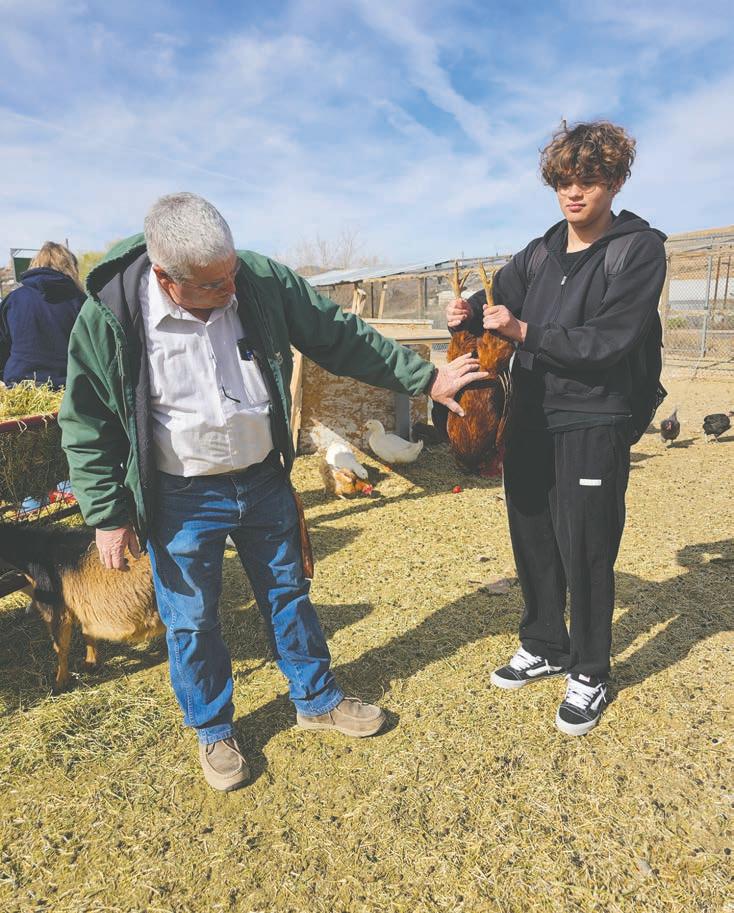






Miami currently has a total of 117 agriculture students taught under Crosby, 88 who are confirmed members of FFA, and 23 who are 8th graders, and approximately 60 who are in their second year of taking agriculture with Crosby.
“So for being a first year teacher, and having that kind of retention, I didn’t feel was too bad,” he says.
The students who are sophomores and juniors this year seem especially excited about the program, Crosby says.
“They’ve participated enough in FFA, they’ve seen what other chapters offer, they’re more inclined to want to go and learn,” he adds. “They’ve taken advantage of the opportunities.”
Such students include Elijah Lopez.
“This is my second year of agriculture, and I love it so much,” he says.
He adds that FFA has given him a lot of opportunities to learn about ag mechanics, and has afforded him the opportunity to show a steer later this year at the county fair.
Crosby and his students finished building the green houses just before their grand opening on December 9. Several students came to the school over their winter break to finish the project. The green houses were funded by Empowering Arizona, a nonprofit that offers grants to school districts.
Tractor Supply donated 50 pounds of vegetable and flower seeds to Crosby’s classes, which students have already begun to plant in the greenhouses, such as corn, peppers, peas, watermelon, and sunflowers.
“I’m flexible on what the students want to grow,” Crosby says.
Now he is working on getting electricity to the houses so they can run exhaust fans and evaporative coolers to help control the humidity and temperature.
He is also working with Pinto Valley Mine to get conveyor belting – ¾ inch rubber mat – which will be used as flooring in the greenhouses and will also keep the structures warm at night.
Just two weeks ago, for FFA week, Crosby worked with the students to harvest three goats. Crosby brought the harvested animals back to students at the school for them to process and then cook.
The purpose, of course, was “for students to learn how to prepare food,” Crosby explains.
The meat was frozen, and the culinary students will use it to make curry for one of the business partner cafés held at the school.
Miami’s FFA program uses The Agricultural
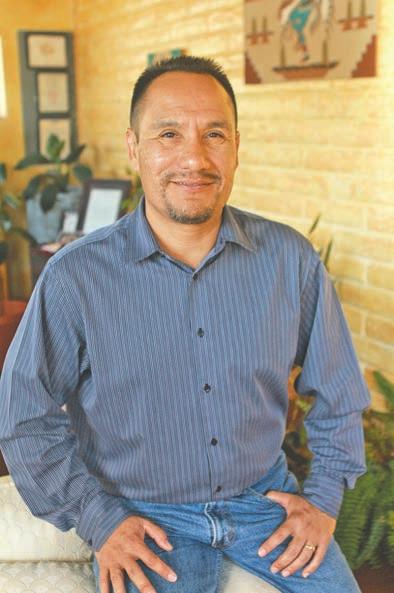
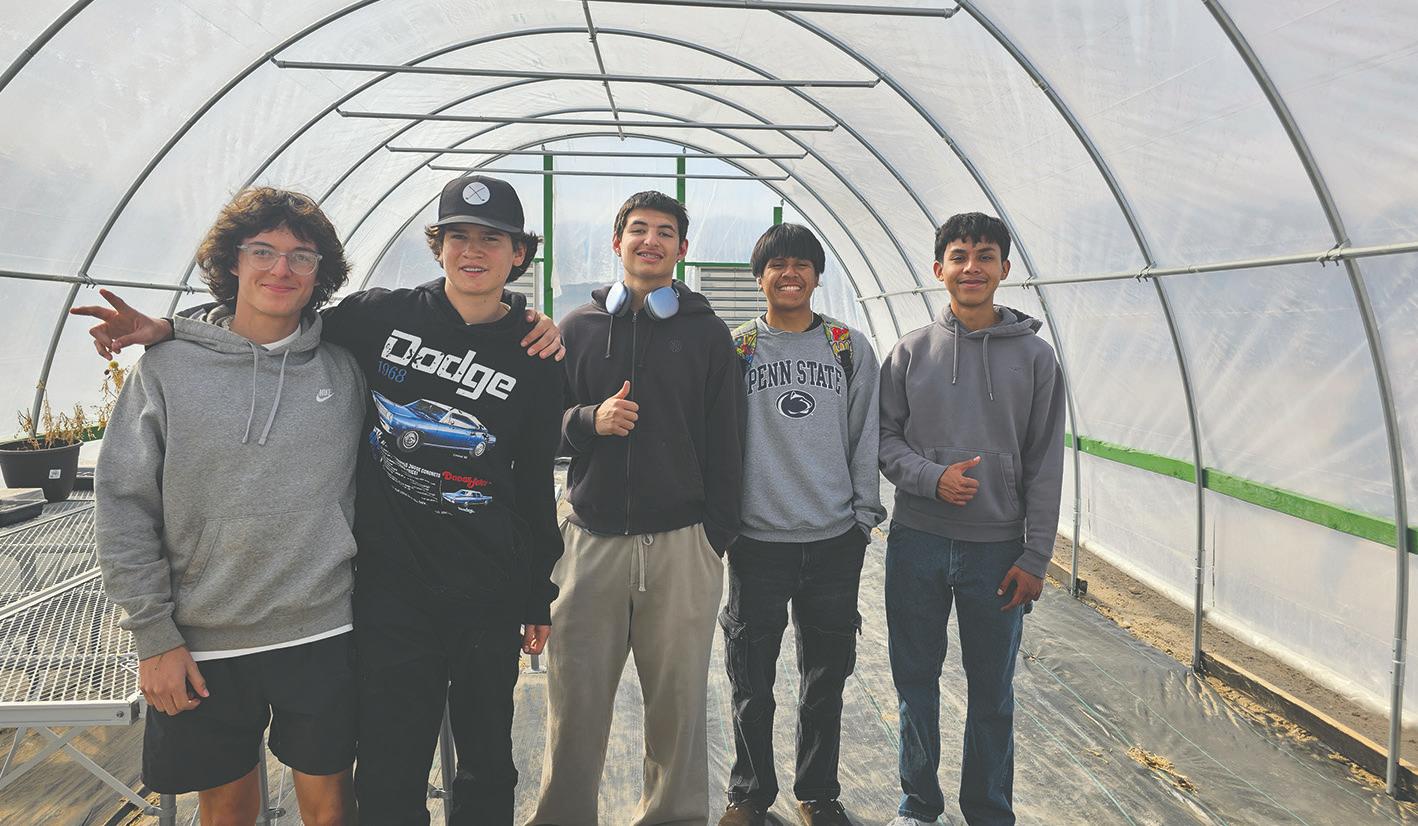
Experience Tracker (AET), a personalized online FFA record book system widely used by high schools for tracking experiences in agriculture courses, for record keeping. Miami ranks 5th for number of supervised agricultural experiences had by students, and it ranks 4th in Arizona for number of badges earned, which are earned by students keeping weekly journals, documenting finances and record keeping in the official online FFA portal.
Other top rankers throughout the state have as little as 44 students in their FFA program.
“To be 4th on the list, I’m pretty confident that’s worth talking about,” Crosby says.
He has high hopes for the future of the school’s FFA program, with plans to continue improving the structures on site, and eventually integrate pigs and sheep into the school’s livestock inventory. And, he hopes that his returning students will continue to develop an interest in the program.
“It takes a long time to build a desire to want to be in agriculture,” he says.
Miami’s FFA program continues to show promise in nurturing that desire in students.
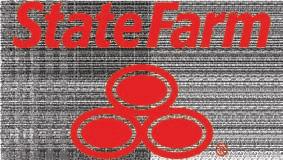




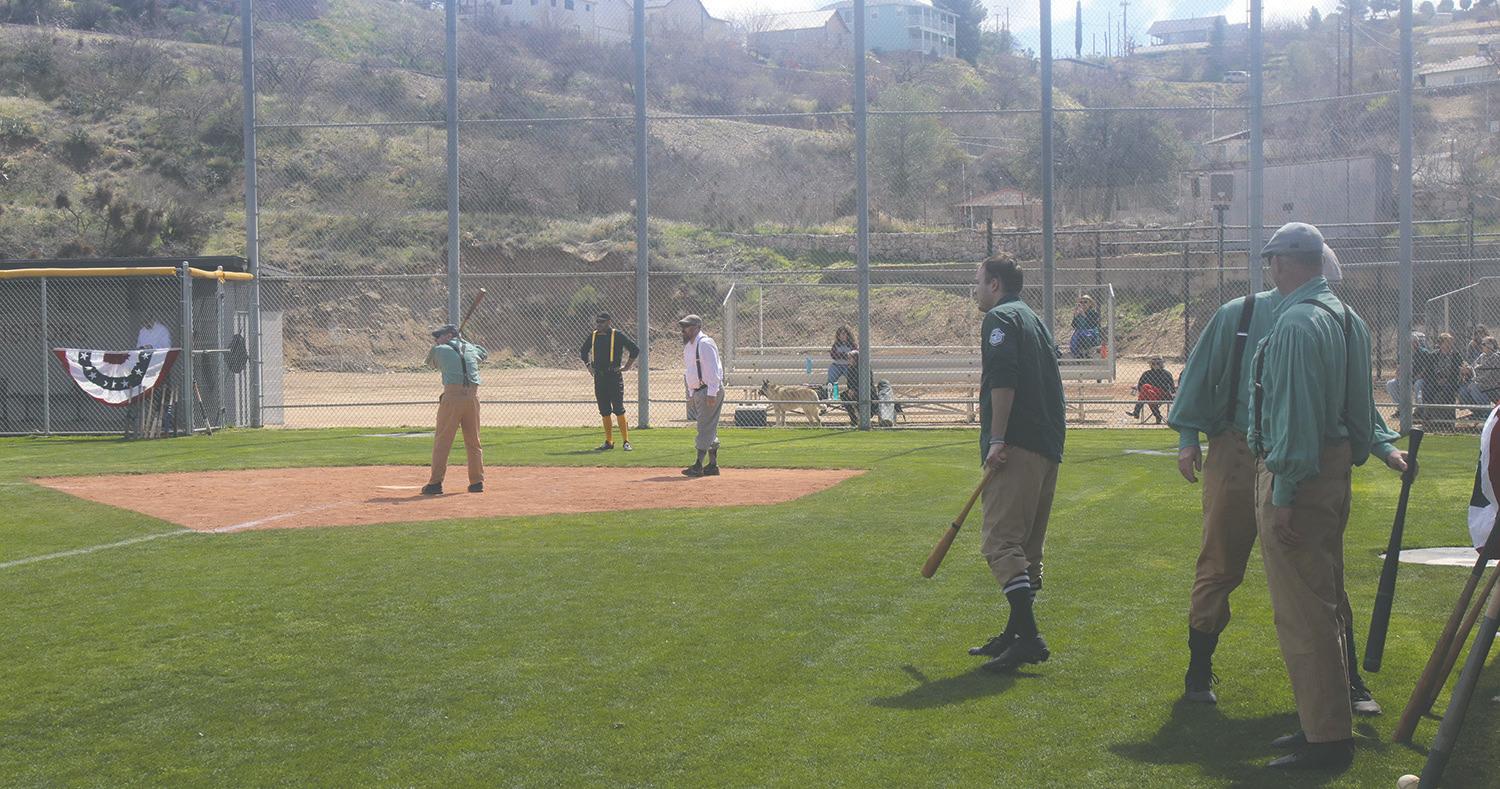
OF
, continued from page 1
Jonathan, 27, was about 10 years old, playing Little League baseball, when he first started going to work on the fields with his father. Every other weekend.
“He would mow and I would go around with a tool called a hula-hoe to maintain the edges.
In 2015, Wes was given the opportunity to host two Little League state tournaments. For two weeks straight, the father-son team arrived at the field early. They set the field up. Lined it. Prepared the clay, the pitcher’s mound and home plate. During that two weeks, a lot of games were played. Jonathan remembers the exact number of home runs by the 11-12 All Stars: 85.
Even after Jonathan grew up and moved to the valley, he came up on weekends to help his father with the baseball fields. In 2022, Jonathan moved back to Globe. Wes was then head coach of the Globe High School baseball team.
“This was the best two years of my life,” says Jonathan, “getting to work side-by-side with him.”
Together they brought the field expectations up; they took classes, and tried new things. Jonathan helped Wes with other fields as well – the varsity field in Miami and the Noftsger and Hagen fields for the City of Globe.
Wes liked a manicured lawn. He was a perfectionist, according to his son, and had a comment about everything. When they experimented with painting their first logo onto the grass, Wes brought along green paint to touch up any mistakes.
Darryl Dalley, a longtime friend of Wes, observed first hand how Wes taught his son.
“He’s going to take over his Dad’s legacy, which is great,” Darryl says.
“He thought the kids of Globe and Miami deserved better,” says Jonathan.
Wes began volunteering for Pinal Mountain Little League in the early 2000s. He contributed as a pitch coach, equipment manager and ultimately, as board President. That’s when a lot of changes happened, his son recalls, and the renovation of the ball fields began.
“It was time to stop playing on a dirt field,” says Darryl.
Darryl hired Wes to do a home inspection, and by the time the business was completed, the two were friends. Wes talked Darryl into coaching a Little League team of 15 kids and later, joining the board.
Wes secured funding for the boys’ field (the old O’Brian Park). Contributions from the local mines and businesses and even the Diamondbacks supported the effort that today is known as the Pinal Mountain Little League Sports Complex.
“Everyone knew Wes,” says Darryl. “Everybody loved Wes.”
Working five nights a week, they replaced the prickly goat heads with green fields, took out all the dirt, knocked down the fence, brought in new sod, installed irrigation, and relocated home plate to its original location.
“I’ve been in the army, and I’ve been around the world, but to have a friend like Wes, I was so lucky. It was not just the Little League but his work in Miami.”
When the town of Miami needed a code enforcement guy, they hired Wes. From there he became an inspector and finally public works director. All while running a business and raising a family.
“His wife deserves a lot of credit,” says Darryl, “for all the time he spent away from the house.”
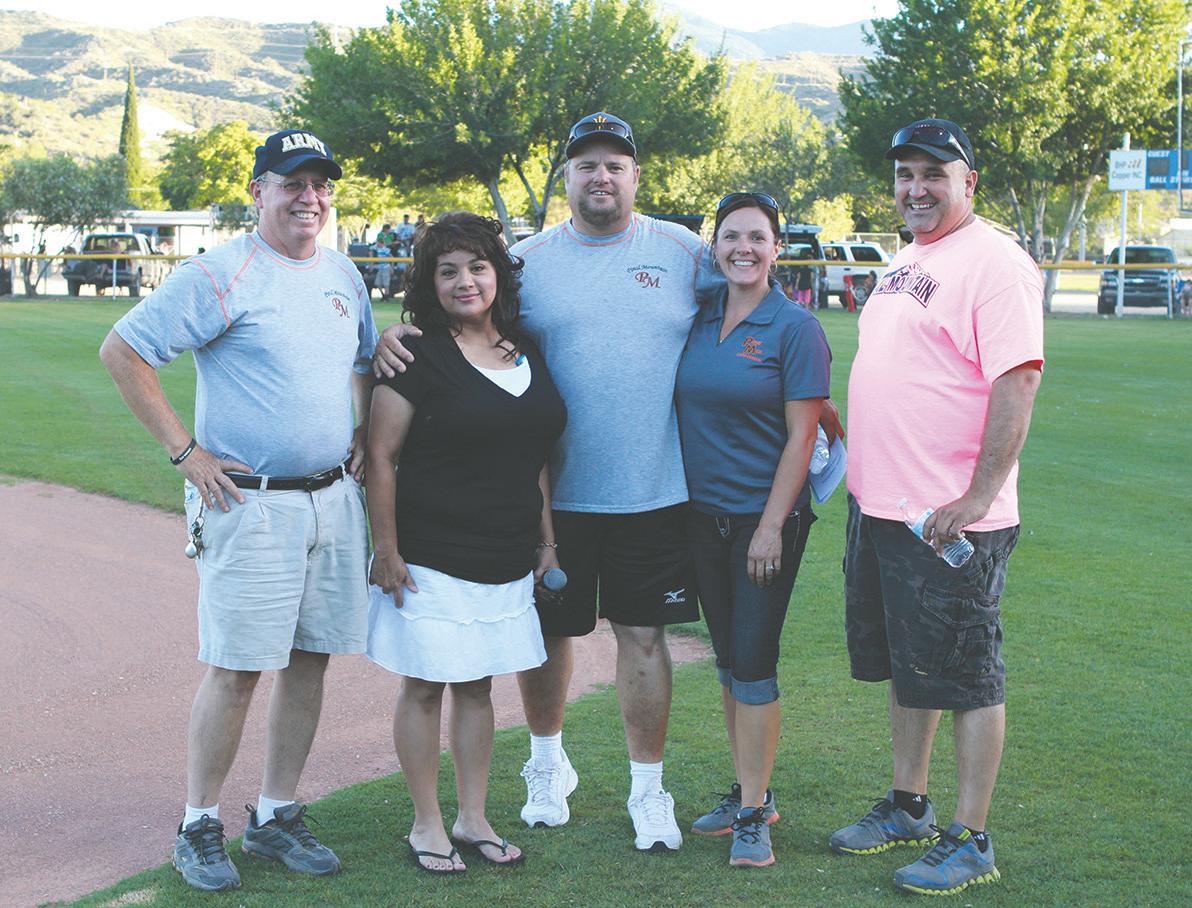
Central Field was home to the Globe Bears, a class D minor league team from 1929-1931. The earliest documented game was played on the Fourth of July, 1891. The corner field and grandstands were also used for baseball and football, wrestling and rodeos. Today, the south-facing grandstand is now used for conditioning drills. Locker rooms stand on the old home plate. In 2008 they fenced off “Coffin Corner,” bringing the boundary in 30 feet closer.
“Eliminated a lot of triples. Made it more home-run friendly,” remarks Kyle Wagner, head baseball coach for the GHS Tigers.
It’s a Friday in late February, and field preparations are well underway for an afternoon practice game. Coach Wagner is helping out. He was a GHS player (2004-2007); so was his father. This is Kyle’s first year at the helm, but he’s been coaching kids since his son (now a freshman) was in Little League, and works full-time as an electrician.
What you get out of baseball, Coach Wagner says, applies to life in general.
“Take pride in something that you do. Being disciplined, dealing with adversity.”
The work ethic is evident in the kids, he says, and in the field – how the pitchers rake the mound and players arrive early to get extra work in. Corban Bejarano, catcher for the Globe Tigers, is there early to help with the prep. His grandfather played on this field in 1904. His grandmother still lives in a house behind left field.

Two hours before game time, the batter’s box has been painted on the clay on both sides of home plate. The baselines are painted on the grass. The ‘infield skin’ has been hosed down, matt-dragged and hosed again. Jonathan demonstrates the hula-hoe, a critical tool for baseball field maintenance, and James Reede, assistant coach, uses a square edged “spoon” to scoop out the dirt from the holes that hold the bases in place. A young daughter looks on. It’s easy to imagine the next generation already starting to take part in the next decade of
community tradition.







We are thrilled to welcome you to four incredible days of history, heritage, and hometown pride as we celebrate the legacy of mining and baseball in Globe-Miami. This year’s lineup is packed with mine tours, walking tours, Lunch & Learn lectures, new museum exhibits, and more!
But the real highlight? The final tournament play of the Arizona Territorial Base Ball League, as teams compete for the Capstone Copper Trophy in our First Annual Old Dominion Days Cup. This exciting weekend of classic baseball brings history to life on the field, connecting past and present through America’s favorite pastime.
Mining and baseball have gone hand in hand in this region since 1882, when the Old Dominion Mine sponsored its first team. In the years that followed, teams like the SmokeEaters (backed by the International Smelter Company) and the Miami Copper Miners (sponsored by Miami Copper) made baseball a staple of mining communities. These games weren’t just sport—they were a source of camaraderie, fierce competition, and deep local pride
This year, we honor that tradition with a heritage baseball exhibit at the Cobre Valley Center for the Arts, featuring rare photographs, stories, and memorabilia from the early days of territorial baseball. Don’t miss this chance to step back in time and relive the golden age of the game!


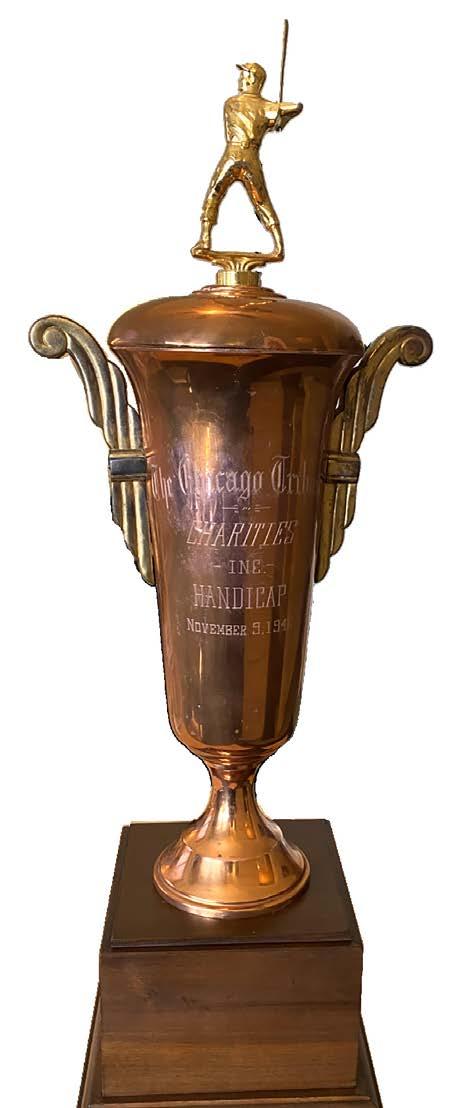
Beyond the ballfield, we invite you to discover the history beneath your feet with our mine and history tours, including:

• Capstone Copper Mine – Get an up-close look at Globe-Miami’s largest open pit mining operation.
• Chrysotile Mine & Ash Creek Canyon with Off-Road Adventure – A rare chance to explore this legendary old mining site and take in the beauty of AshCreekCanyon.
• Walking Tours & Guided Hikes – From the hidden stairways of historic Globe to the scenic trails of Round Mountain Park.
For those who love deep-dive storytelling, our Lunch & Learn lectures and museum exhibits offer rare insights into mining history, safety innovations, and the lives of the miners who built this region. Highlights include:
• A Photographic Journey Through 100 Years of Hardrock Mining – Featuring stunning large-format images of abandoned underground mines and historic mining operations.
• Strong Communities: Partnerships – A conversation with industry leaders on the evolution of mining and community partnerships.
Whether you’re here for the history, the action on the field, or the adventure, Old Dominion Days is about celebrating the legacy of this incredible region. So grab your tickets, explore, and enjoy the rich history and vibrant energy of Globe-Miami.
We’re honored to have you with us for this unforgettable weekend— let the games, the discoveries, and the memories begin!
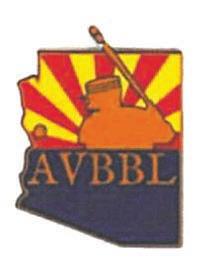
Nineteenth century baseball was considerably different than today’s game.
Pitching must be underhanded.
A ball caught on one bounce is an out.
A foul tick caught on the fly or one bounce is an out.
Any ball caught on the fly or one bounce by players or spectators is an out
No tagging up on a fly ball; runners may advance on a one-bounce catch
A ball is fair or foul based on where it first hits the ground—it does not need to pass first or third base.
Foul balls are not strikes
No overrunning first base—runners can be tagged out if they do.
No leadoffs or stealing bases
Balls and strikes are not usually called—the hurler’s job is to pitch hittable balls; the defense must get the batter out
The umpire’s rule is LAW.
Only the team captain may address the umpire, who must be treated with respect.
Arguing, profanity, or ungentlemanly conduct results in a 25-cent fine.
The game is played for fun!
Enjoy the game and play with honor!
The History of Vintage Base Ball
– Nationally and in Arizona
Baseball has long been considered America’s pastime, but few know that the game has roots stretching back over 160 years, with rules, equipment, and traditions that evolved alongside the country itself. Today, vintage base ball (historically spelled as two words) aims to preserve and celebrate the sport as it was played in its earliest days.
Modern vintage base ball began in 1979 at Old Bethpage Village Restoration in Long Island, New York, followed by Ohio Village in 1981. Since then, the movement has spread across over 20 states, as well as Canada, with teams donning period-accurate uniforms, using historical equipment, and following 19thcentury base ball rules. Games are often played at open-air museums, living history sites, Civil War re-enactments, and city parks, providing a living glimpse into the origins of the sport
At any given time, nearly 400 clubs exist across North America, with the Vintage Base Ball Association (VBBA) working to grow the sport and ensure accuracy in historical gameplay. The VBBA’s mission is to preserve, perpetuate, and promote base ball as it was played in its formative years, offering vintage rules interpretations, historical guidance, and support to teams nationwide.
Arizona has embraced vintage base ball with its own Arizona Territories Vintage Base Ball League (ATVBBA), which has been active for over 15 years. Teams across the state compete using the 1863 rule set, aligning with VBBA standards to honor the history of the game
Like many organizations, the Arizona league suffered a setback due to the COVID-19 pandemic, losing teams and players. However, in 2022, the league rebounded, and today, nine teams now compete in a season that runs from fall through late spring (ending in April)
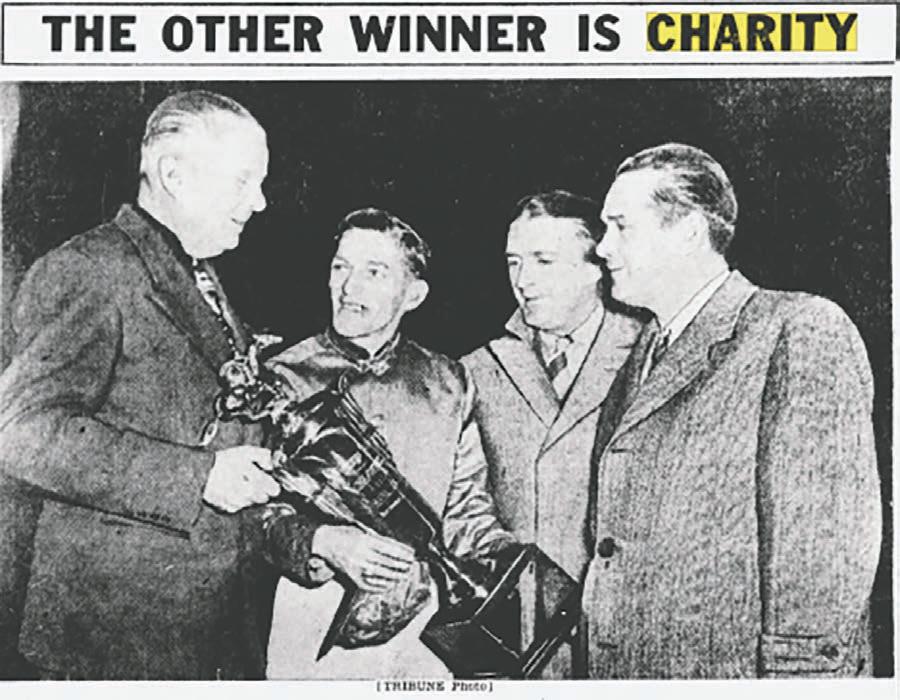
The Arizona Territories Vintage Base Ball League is always looking for new players—whether you’re a history enthusiast, a ballplayer seeking a new challenge, or someone eager to experience the game the way it was meant to be played
If you’re interested in joining a team, visit arizonavintagebaseball.org and connect with a captain in your area.
The copper trophy set to be awarded at the first annual Old Dominion Cup Tournament carries a history nearly as rich as the game itself. Dating back almost 80 years, this unique piece was originally the crowning glory of charity racing at Sportsman’s Park in Chicago.
Once presented to the winning jockey of the Chicago Tribune Charities, Inc. Handicap, the trophy was awarded by Charles W. Bidwill, president of the National Jockey Club. Over time, it found its way into the hands of an antique dealer—missing the horse that once stood atop the piece. In a fitting twist of fate, the dealer replaced it with a baseball player, perfectly aligning the trophy with its new purpose in Globe’s historic tournament.
Now, this storied trophy has been adopted as the symbol of the Old Dominion Cup, thanks to Capstone Copper, the tournament’s signature sponsor. It will serve as a traveling trophy, passed from winner to winner each year and proudly displayed by the reigning champions.
Much like the miners and ballplayers of Globe’s past, this trophy represents endurance, tradition, and the spirit of competition—a perfect fit for the Old Dominion Cup.








TICKETS Available for individual events or as a package. For full schedules & tickets: OldDominionDays.eventbrite.com.
april 24-27, 2025
THURSDAY, APRIL 24
Lectures & Presentations at Bullion Plaza Museum
LOCATION
Various venues across Globe & Miami
9:00 – 10:30 AM | An Armchair Tour of Ash Creek Canyon & Chrysotile Mine – Slideshow & talk by AzOffRoadTours (Includes coffee & donuts) | $15 11:00 AM – 1:00 PM | Lunchtime Legacy Panel: Mining Then & Now – Industry leaders discuss mining’s evolving role (Includes lunch) | $25
TOURS – Various Locations
7:00 AM | Stairizona Walking Tour (Meet at Vida e Caffe, 153 Broad St.) | $30
1:30 PM | Exclusive Copper Rod Plant Tour (Meet at Bullion Plaza Museum) | $25
2:30 PM | Exclusive Copper Rod Plant Tour (Meet at Bullion Plaza Museum) | $25
1:00 – 4:00 PM | Chrysotile Mine & Ash Creek Canyon Off-Road Tour (Meet at Hwy 77 and mile marker 183) | $150
FRIDAY, APRIL 25
Lectures & Presentations
11:30 AM – 1:00 PM | A Photographic Journey: 100 Years of Hardrock Mining Rare – Special Collection of historic hardrock mining images hosted by Jay Spehar, Sheldon Miller & Linda Gross (Includes lunch) | $25 Gila Historical Museum – Lecture & Hamburger Fry
5:00 – 6:00 PM | The History of Old Dominion Mine – Talk by Zach Larsen (BHP) on the rise and reclamation of Globe’s most productive mine (Includes entry to Hamburger Fry or lecture-only ticket) | $20 (w/ meal) or $10
6:00 – 8:00 PM – Museum Hamburger Fry under the stars | $10
Tours – Various Locations
7:00 AM | Stairizona Walking Tour (Meet at Vida e Caffe, 153 Broad St.) | $30
1:00 – 4:00 PM | Chrysotile Mine & Ash Creek Canyon Off-Road Tour (Meet at Hwy 77 and mile marker 183) | $150
9:30 – 11:30 AM | Capstone Copper Mine Tour (Meet at Bullion Plaza Museum) | $25
Historic Ballfield: Central Field in Globe PLAY BALL! $20 Gate Fee covers both Saturday & Sunday Portion of all proceeds go to support Globe Baseball & Central Field 8:00 AM | Gates Open - Vendor Booths Set Up - Teams Arrive. 9:00 AM – 4:00 PM | Tournament Play Begins
Teams: Higley Haymakers, Tucson Saguaros, Tempe Millerettes, Phoenix Senators, Maricopa Maidens, Bisbee Black Sox, Globe Bears (w/ Buckeye Bombers) Opening Ceremony: National Anthem & First Pitch by our very own Rose Mofford
SATURDAY, APRIL 26
Special Lectures & Presentations at Cobre Valley Center for the Arts
5:30 - 6:30 PM | Reception and Opening of Baseball Heritage Exhibit (CVCA) | $20 (includes lecture)
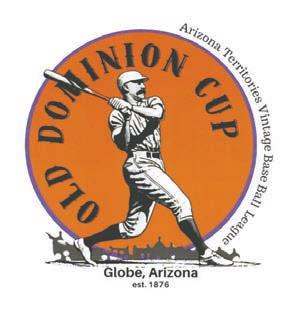
6:30 – 8:00 PM | Territorial Baseball in Arizona – Talk, slideshow, & book signing by author John Tenney | $20 Tours – Various Locations
7:00 AM | Guided Hike: Round Mountain Park (Meet at Round Mountain Park – Dogs on leashes welcome) | $20 (Free w/ ALL PASS)
7:00 AM | Stairizona Walking Tour (Meet at Center for the Arts, 101 Broad St.) | $30 11:00 AM – 1:00 PM | Capstone Copper Mine Tour (Meet at Bullion Plaza Museum) | $25
1:00 – 4:00 PM | Chrysotile Mine & Ash Creek Canyon Off-Road Tour (Meet at Hwy 77 and mile marker 183) | $150
Historic Ballfield: Central Field in Globe PLAY BALL! 9:00 AM – 1:00 PM | Tournament Play Continues
SUNDAY, APRIL 27
Tours – Various Locations
7:00 AM | Guided Hike: Old Dominion Historic Mine Park (Meet at Old Dominion Mine Park) | $20
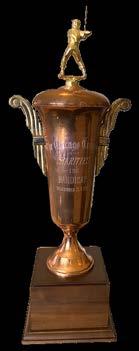
7:00 AM | Stairizona Walking Tour (Meet at Center for the Arts, 101 Broad St.) | $30
1:00 – 4:00 PM | Chrysotile Mine & Ash Creek Canyon Off-Road Tour (Meet at Hwy 77 and mile marker 183) | $150
Baseball – Old Dominion Cup Tournament Ceremony
Historic Ballfield: Central Field in Globe 1:00 PM | Awards Ceremony – Old Dominion Cup Champion Crowned!
Don’t miss this exciting lineup of tours, talks, and baseball games celebrating Globe’s rich history, mining heritage, and classic ballgame tradition! Get your tickets now and be part of this unforgettable weekend!


Meet: Cobre Valley Center for the Arts Cost: $20 | Time: Saturday 6:30–8 PM
Author John Tenney brings Arizona’s early baseball history to life—from cavalry rivalries to mining town teams. Includes a slideshow, talk, and book signing after the Baseball Heritage exhibit and reception.
Meet: Bullion Plaza Museum | Cost: $15
Time: Thursday 9–10:30 AM (Includes coffee & donuts)
Can’t make the off-road tour? Join owner, Andy Coburn of AzOffRoadTours for a captivating slideshow and talk on the history and beauty of the Ash Creek Canyon area and the old Chrysotile mine.
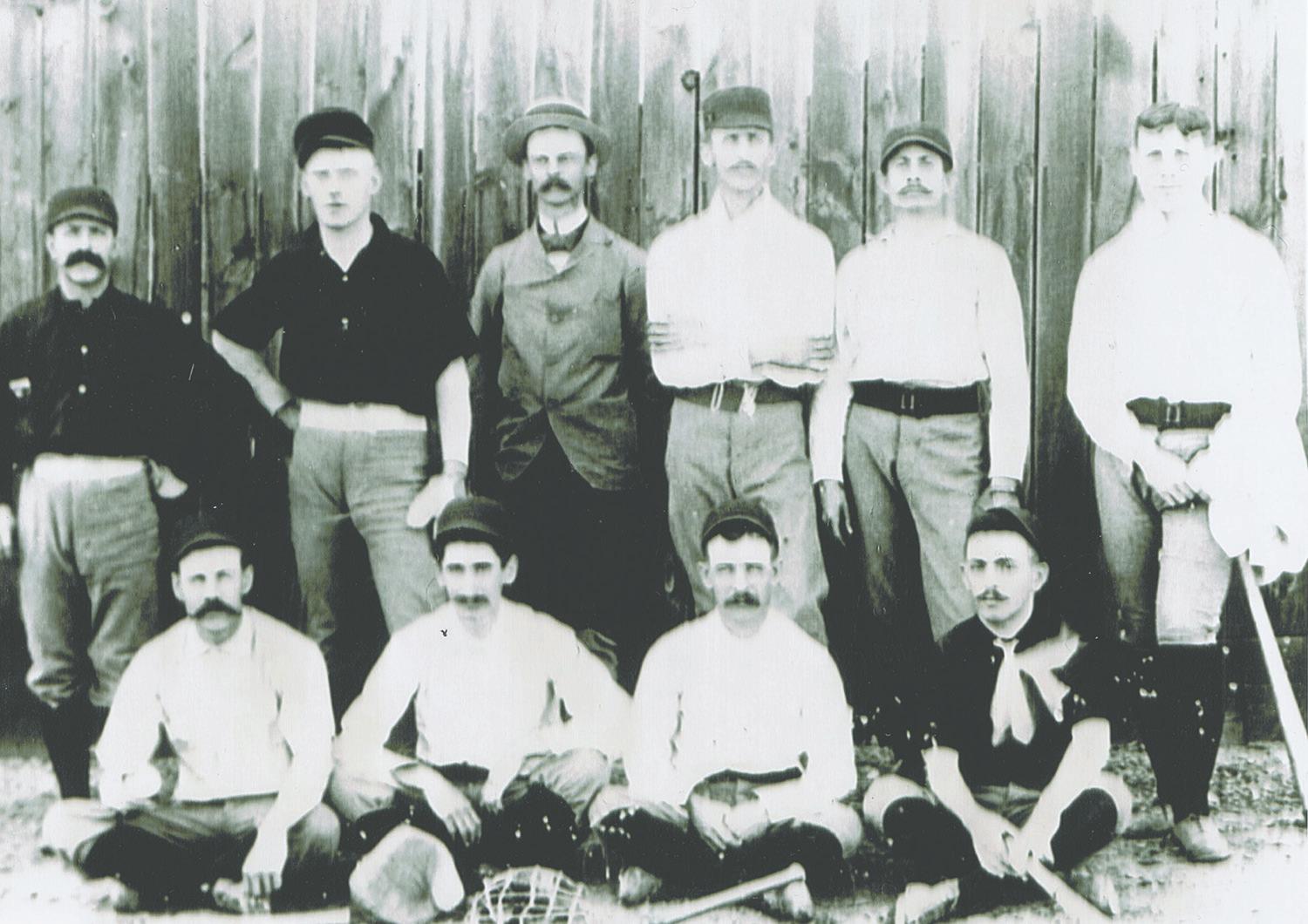
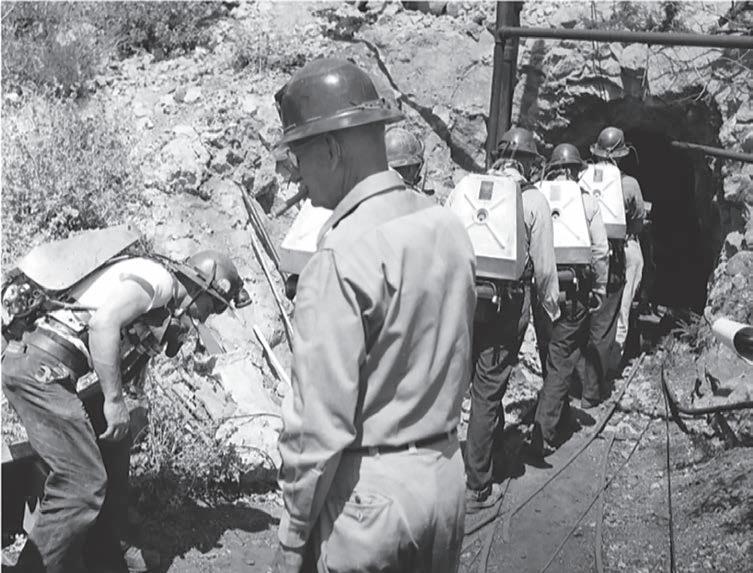
Meet: Bullion Plaza Museum (2nd Floor) | Cost: $25 (Includes lunch)
Time: Fri: 11:30 AM–1 PM
A Special Collection of images spanning a century of hardrock mining, showing the men, the mines, the groundwork and the grit of hardrock mining here and around the West. Featuring archives from local museums and others. Moderated by mining historian Jay Spehar and Sheldon Miller, former Globe Museum Director, and event host Linda Gross. Guaranteed to leave you spellbound on the sheer audacity of those who pursued hardrock mining at the turn of the century.
Meet: Bullion Plaza Museum (2nd Floor) | Cost: $25 (Includes lunch) Time: Friday 11 AM–1 PM
Moderated by Superior’s Mayor, Mila Besich, the panel includes key management with Freeport-McMoRan, Capstone Copper, BHP and Resolution Copper in discussing mining’s evolving role in community partnerships, sustainability, and economic growth.

Meet: Gila Historical Museum | Cost: $20 (Includes Hamburger Fry) or $10 (Lecture only) | Time: Fri: 5–6 PM Learn about






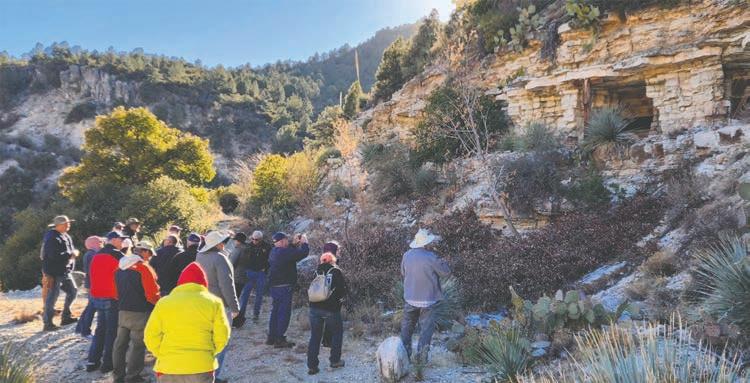

Meet: Bullion Plaza Museum | Cost: $25 | Times: Fri 9:30–11:30 AM | Sat 11 AM–1 PM
Travel to Globe-Miami’s largest open-pit mine! Enjoy a guided bus tour featuring mining lore, live operations, and an up-close look at one of Arizona’s most active copper mines.

Meet: Vida e Caffe 153 S. Broad St. | Cost: $30
Time: Thursday-Sunday, daily at 7 AM
Step through time on this unique walking tour of Globe’s historic staircases! Explore murals, hidden pathways, and rich mining-town history while taking in panoramic views.
Meet: Hwy 60 & Turnoff 256 | Cost: $150
Time: 1–4 PM Daily
Meet at Hwy 77 and mile marker 183
Step back in time with an exclusive off-road tour to the historic Chrysotile Mine! Explore mining ruins, witness restoration efforts, and discover artifacts amid the stunning Ash Creek Canyon Preserve.
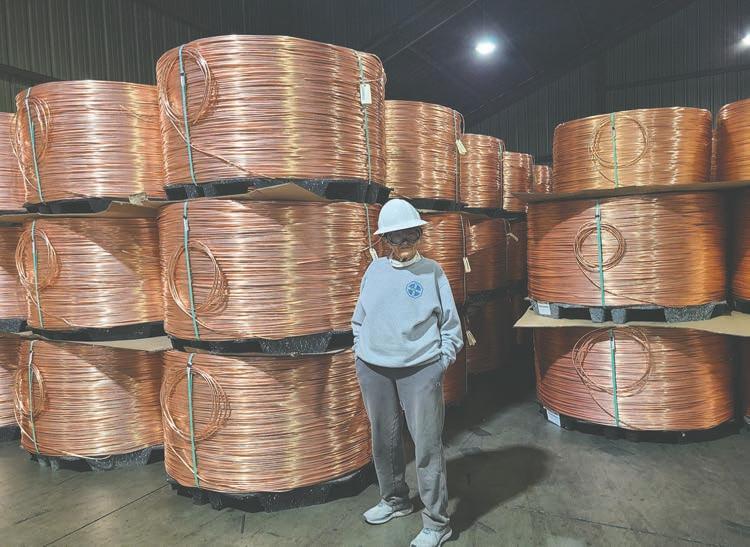
Meet: Bullion Plaza Museum | Cost: $25
Time: Thursday 1:30 & 2:30 PM
Get an inside look at Miami’s Rod Plant! See firsthand how copper is melted, cast, and rolled into the essential rods powering modern industry in this behind-the-scenes tour.

Old Dominion Mine Park: Guided Walking
Meet: Old Dominion Mine Park | Cost: $20 | Time: Sat 7 AM
Discover Globe’s mining legacy on a one-hour guided walk through Old Dominion Mine Park! Explore historic structures, interpretive trails, and learn about the region’s mining history.

Dates: April 26-27 | Location: Central Field in Globe Step back in time and experience baseball the way it was played in the early days of Arizona! The Old Dominion Cup brings together some of the finest teams in Territorial Baseball, blending history, competition, and classic charm.
Opening Ceremony: National Anthem & First Pitch by our very own Rose Mofford Tournament Play: Saturday 9 AM – 1 PM | Awards Ceremony: Sunday 1 PM

One of the original teams in the Vintage League, they feature players ranging from their 20s to an inspiring 81-year-old veteran! Named after the historic Tucson Saguaros, they bring deep roots and serious skill.
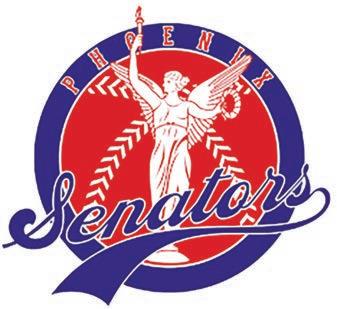
A true staple of Arizona baseball history, this team traces its name to the Phoenix Senators (1915-1957). One of the league’s original teams, they embody the spirit of classic baseball.

This all-women’s team plays in vintage 1940s uniforms, honoring the pioneers of women’s baseball. The team has rapidly grown into a powerhouse, channeling the legacy of Arizona legend Rose Mofford

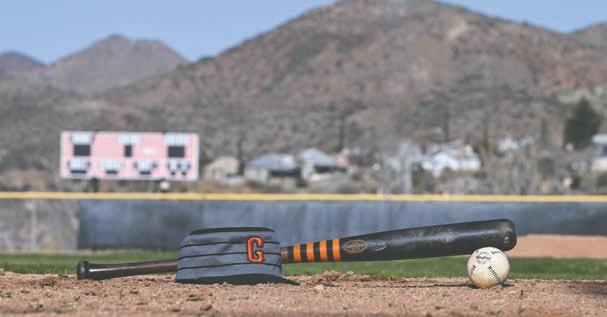
Representing the hometown!
Sporting Globe’s traditional colors, the Bears are the newest team in the league and are still building their roster. This year, they’ll be teaming up with members of the Buckeye Bombers to round out the competition and make their mark on the tournament.
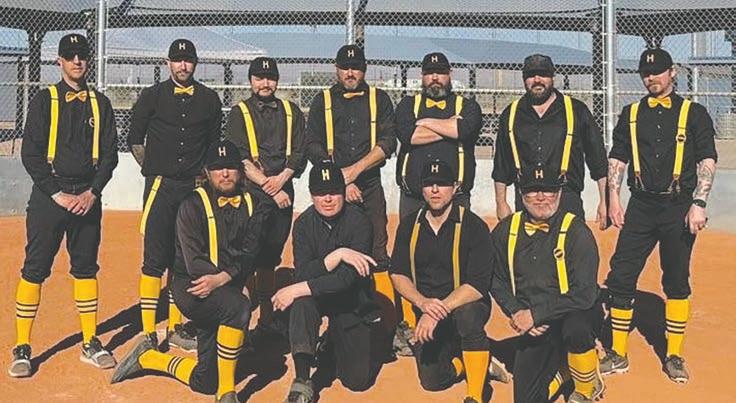
The team to beat! Two-time Arizona State Champs, these seasoned players (ages 20s-50s) have dominated Territorial Baseball since their 2023 debut. Their roster even includes a family trio—two brothers and their cousin!
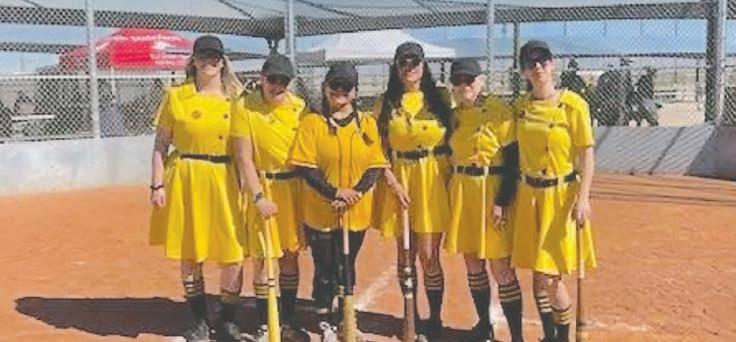
Inspired by the 1940s Minneapolis Millerettes, this newest team in the league is as fierce as they are fun! With an age range of 15 to 75, they bring a mix of talent and passion to the diamond.
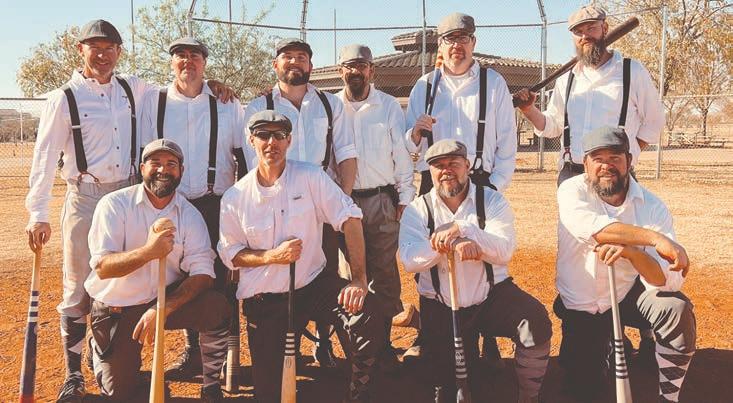
Mesa Miners are a rough and tough group of gentlemen. A hard-hitting team who live up to their team name. Well versed on the vintage base ball play.
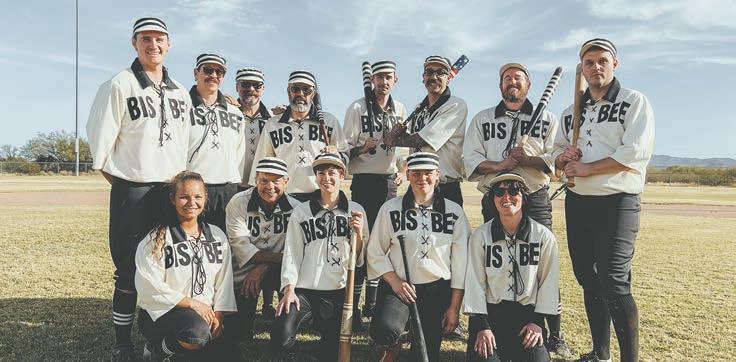






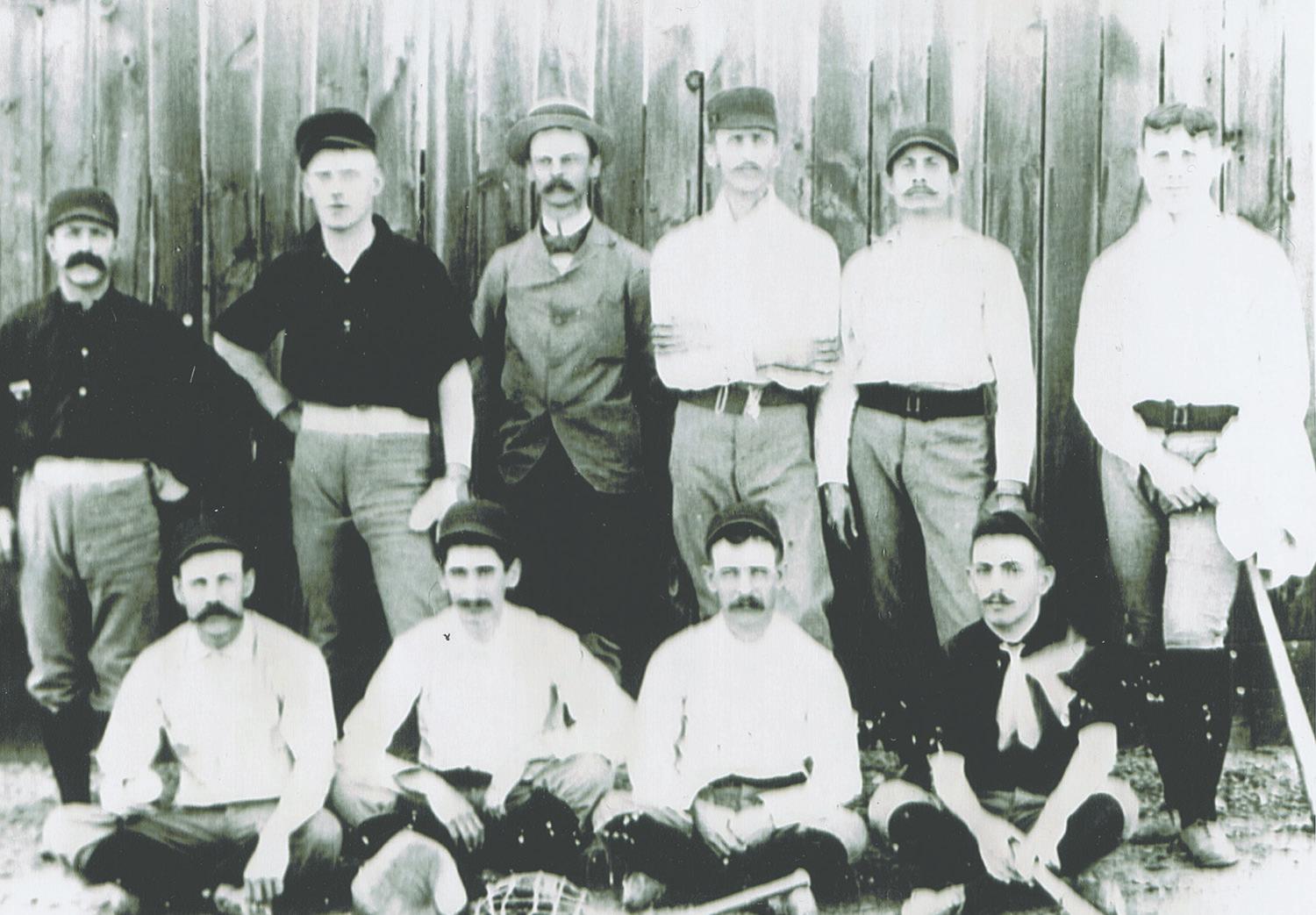
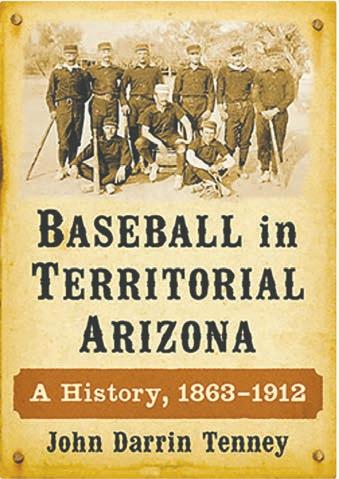
Old Dominion Mining Company played loose pick-up games against the boys in town in 1892. Before then, Globe’s main source of competition was the soldiers from Camp San Carlos, 22 miles east of town…
The earliest known baseball games played in Globe by a company-sponsored nine was in late July 1892. The Silver Belt printed a notice in the paper on July 23 noting the Old Dominion Copper Company had taken the name of “The Walkers.” The name may have reflected some aspect of their profession, or was given to them by the newspaper or collectively by the citizens of Globe.”
“...The development of the railroad in Globe was very important. The rail line ushered in a new era of production, allowing the company to efficiently ship out what was being produced in the mine. The new mode of transportation also allowed people to travel farther than they had thought possible, and in a shorter amount of time. By 1903, excursions to baseball games were a popular thing for local cranks in Globe, traveling as far as Cananea, Mexico, to see the hometown nine compete. Globe would hold a keen interest in baseball, fielding two town nines in addition to the clubs representing the mining companies. …”
(Catch Tenney’s full presentation on Saturday, April 26th at the Cener for the Arts)
Miami, Arizona 1923 ~ Written by Frank
Tippett
In 1923, L. O. Howard was General Manager of the International Smelting & Refining Co. where I worked. I was quite a baseball player and had organized a team known as the Smoke Eaters for the smelter. I wanted to get some financial help from the Company, since I had previously worked in the rubber factories in Akron, Ohio, where the factories sponsored all forms of athletics, including baseball, basketball, and boxing. I suggested this to Henry Allen, Chief Clerk at the smelter, and Ben Franklin, Chief Timekeeper. They advised me that L. O. Howard hated baseball players since he had previously employed them and they were all “goldbrickers.” I allowed as to how I had been fired from better jobs than the one I had and was going to tackle the lion in his den.
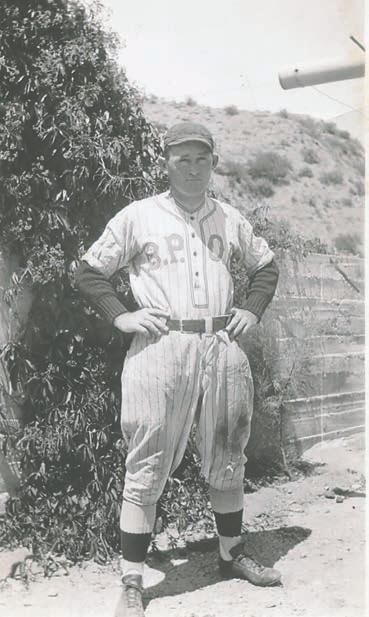
I got an appointment with Mr. Howard and in conversing with him for about an hour, I sold him on the idea that he would have more contented employees by sponsoring our baseball team to which he agreed, and I left his office with a blank check to purchase uniforms, bats, balls, catchers’ equipment, umpires’ equipment, and all the necessary incidentals. Mr. Allen and Mr. Franklin were very pleasantly surprised, and Mr. Howard became an avid baseball fan and parked his Cadillac in the third base area at all of our games. We won three Twilight League pennants and presented Mr. Howard with the trophies on the mantle in his office.

In 1923 we had a baseball game starting at 5:00 p.m. at old Association Park in Lower Miami. I was working afternoon shift at the smelter and left the job long enough to play in this game. I had on a sweat shirt, work khakis, and, of course, baseball shoes. I was playing third base, and the batter hit a hot ground ball to me; it took a bad hop and hit me on the right trouser pocket. I had a pocket full of wooden matches which were ignited and I undressed from the waist down to the tremendous applause of the fans, burned a spot on my leg, but I got the fire put out and continued play.
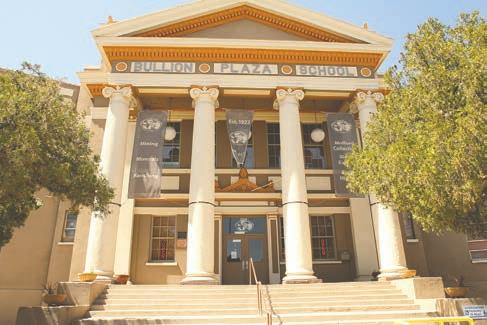
Bullion Plaza Museum and Cultural Center, housed in a historic 1923 school building in Miami, was designed by the famous architectural firm of Trost & Trost. Once an elementary school for Mexican-American children, it now showcases exhibits on local history, mining, and Native American culture and monthly talks on aspects of local history. The Museum serves as a vibrant community hub and meeting facility, celebrating its 100th anniversary in 2024. During Old Dominion Days they will host the Lunch & Learn series and an exhibit of photographs from 100 years of hardrock mining.
Located: 150 N. Plaza Circle, Miami.
Hours: 10 am-2 pm Wed-Fri ,10 am- 4 pm Sat & Sun

Cobre Valley Center for the Arts
The Arts Center, housed in the historic 1906 Gila County Courthouse in Globe, Arizona, preserves the region’s artistic and cultural heritage. Once a center of justice, it now showcases local and regional art, music and theater. The main gallery will host an exhibit of the region’s baseball heritage through rare historical photographs, local stories and historical research, followed by a slideshow and presentation by author John Tenney, who wrote the book, Baseball in Territorial Arizona 1863 -1912.
Located: 101 N. Broad Street, Globe Hours: 10 am-4 pm Tues - Sat, Noon-4 pm Sun. & Mon

Gila Historical Museum
The Gila County Historical Museum was founded in 1955 in order to study, collect, preserve and disseminate the history of Gila County. Housed in the former Old Dominion Mine Rescue Station across from the Old Dominion Mine, it features a large archive of photographs, documents, maps and exhibits of mining, ranching, and business and families in the area dating back to the late 1800s. Offering research assistance and insights, the museum has been a destination for families, book authors and researchers focused on Globe, Miami and Gila County.
Located: 1330 N. Broad Street, Globe Hours: 10 am-2 pm Tuesday-Saturday.

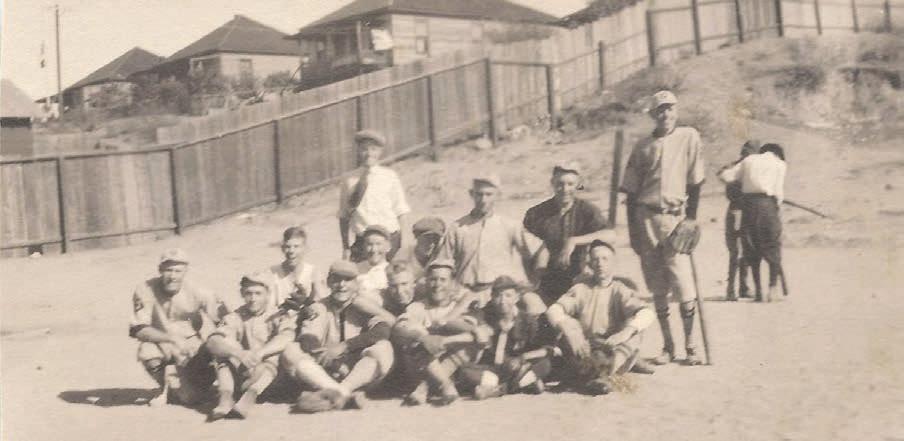
Globe’s Central Field
Central Field was home to the Globe Bears, a class D minor league team from 1929-1931. The earliest documented game was played on the 4th of July, 1891. The corner field and grandstands were also used for baseball and football, wrestling and rodeos. Today, the south facing grandstand is now used for conditioning drills. Locker rooms stand on the old home plate. In 2008 they fenced off “Coffin Corner,” bringing the boundary in 30 feet closer.
Early day photo of the field known as Schoolhouse Field. Circa 1896
GOLD SPONSOR
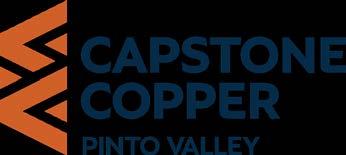
BRONZE SPONSOR SILVER SPONSOR

















The D-Backs have their signature dogs and we will have ours. Let the tradition begin!
Step up to the plate and fuel your game-day excitement with BravoAmericano’s special Old Dominion Cup menu! We’re serving up our own brand of Brats and Dogs when the Territorial League comes to town!
Check out the *Capstone Copper Classic, the DominionDogSlugger or our special, The Wes Dog – A Grand Slam Classic. A double-smoked brat (because Wes always went the extra mile), grilled onions, cheddar cheese, crispy bacon, and a drizzle of BBQ sauce—a bold, flavorful tribute to a man who took pride in everything he built, especially on the field.

PLUS: NEW! Territorial Pizza – Inspired by Arizona’s rich history, this special-edition pizza is a bold, flavorful tribute to the flavors of the Southwest—perfect for sharing with your team!
Whether you’re celebrating a big win, soaking in the tournament atmosphere, or just craving a great meal, BravoAmericano has you covered—and we’re delivering straight to the ballpark! Enjoy your favorite flavors without missing a minute of the action.
Official Sponsor of the Old Dominion Cup Tournament
Your official host for overnight stays during Old Dominion Days! Offering 10% discount off your rate by just mentioning ODD. 1565 E. South Street, Globe, AZ 85501 • (928) 425-7575 • www.copperhillsinn.com






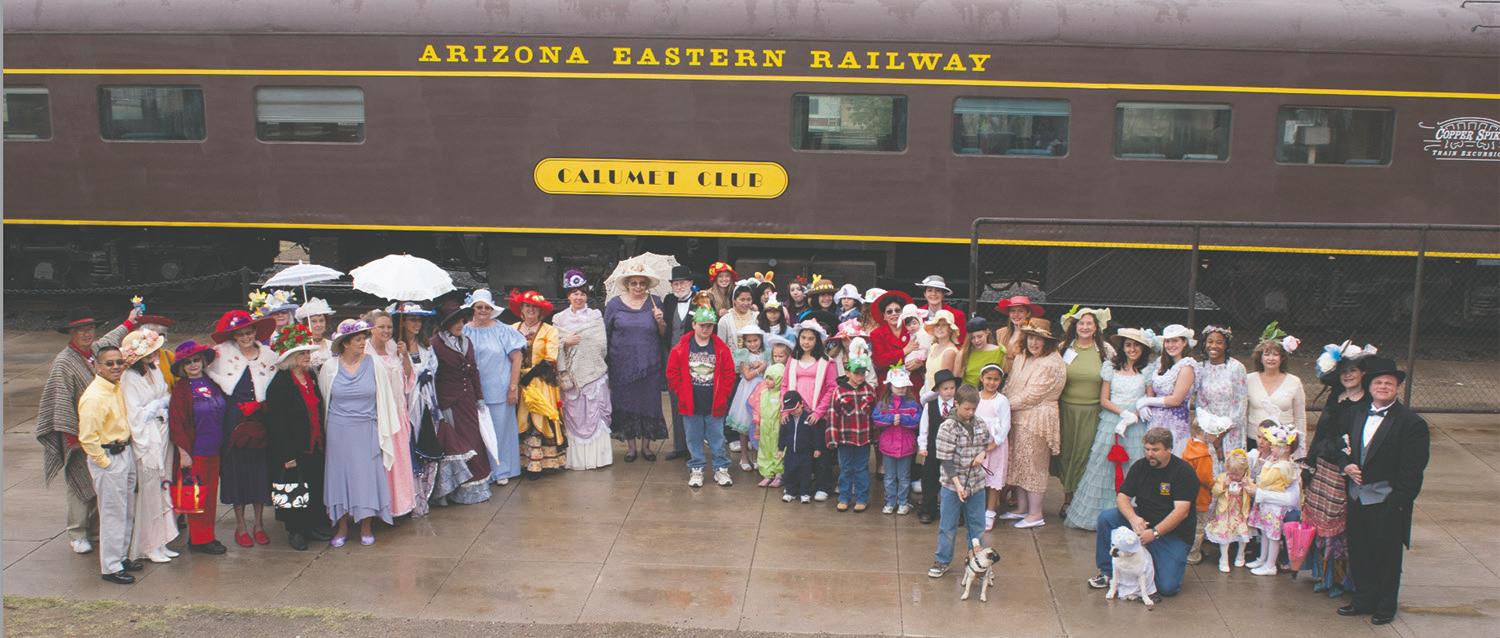
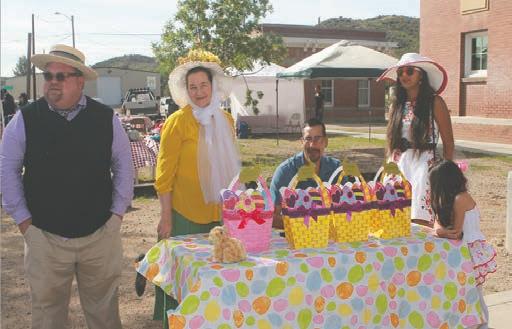




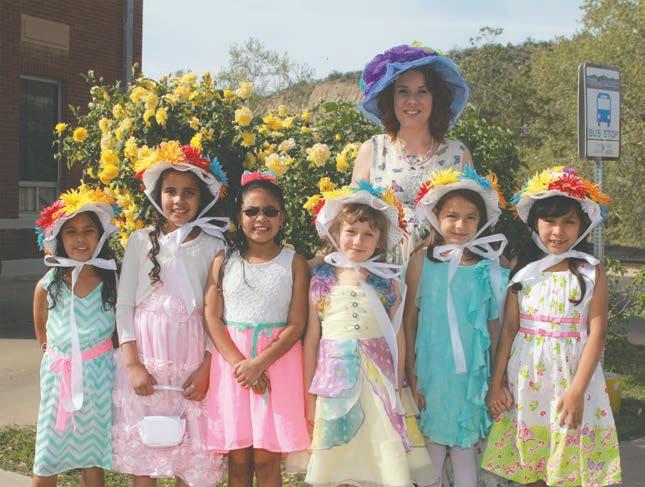
The tradition of Globe’s Annual Easter Parade began in 2006, thanks to the vision of Mainstreet Director Kip Culver. Always seeking ways to draw people downtown, Kip saw an opportunity to celebrate one of Globe’s greatest charms—its walkable, historic downtown.
That first year, the weather nearly derailed the plans, with rain threatening to wash out the event. However, the skies cleared just in time, leaving the streets damp but walkable. Nearly 70 participants, dressed in their Easter finest gathered at the historic Train Depot, which, at the time, was home to the Copper Spike Excursion Railroad featuring the Calumet Club Car—another one of Kip’s many contributions to the revitalization of downtown Globe.
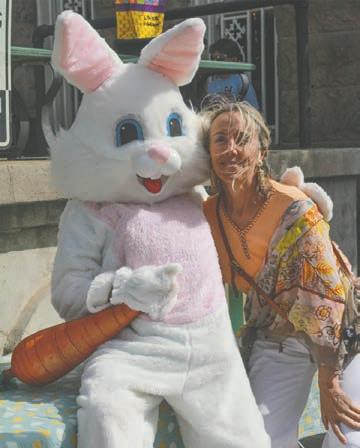
The Easter Parade has grown into a cherished tradition, attracting both locals and visitors. After all, where else can you don your bonnet, stroll with your babies, beaus and best friends?
We have taken photos every year, but here is a look at the ones from ten years ago. The year was 2015 and there were quite a few beautiful and fun entries as you can see.
We invite you to join your host, Globe Downtown Association, for this year’s festivities!

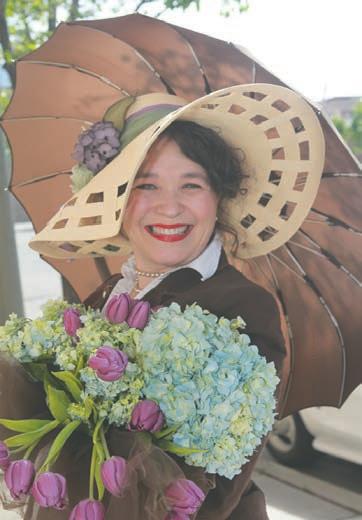
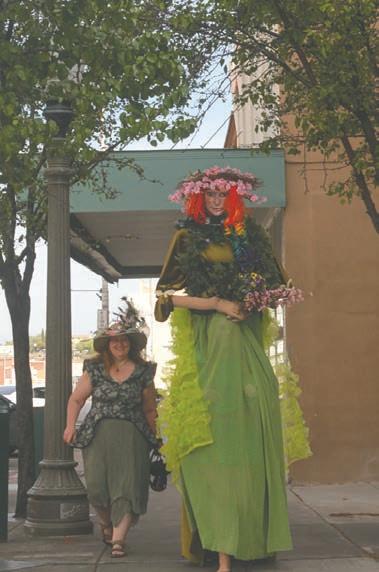
2025 Easter Parade Event Schedule
Date: Saturday, April 19th
Location: Globe Train Depot & Historic Downtown
9:00 AM - 1:00 PM – Live music at the Train Depot to kick off the fun.
9:30 AM – Meet & Greet at the Train Depot, event check-in, Easter Bunny photo ops, and sidewalk chalk art.
10:00 AM - 11:00 AM – The Easter Bunny leads the group on a leisurely stroll down North Broad Street to South Broad Street and back.
11:00 AM - 12:30 PM – Selfie scavenger hunt, more Easter Bunny photo ops, music, refreshments, and more fun!
For more information, contact: Molly Cornwell, Events Coordinator – 480-345-7477; Globe Downtown Association Office – 928-425-8111. We can’t wait to see you there—bonnets and all!

WRESTLING, continued from page 1
This year Rascon-Perez notched a 23-7 record in her weight class of 120, up from 107 last season, and her sectional win earned her a number four seed.
She was joined in the February 21-23 girls’ championships, also in Phoenix, by two Miami Jr./Sr. High School wrestlers, sophomores Elise Combs and Dani Vargas. Combs would place fifth in the tournament and RasconPerez would tie for seventh.
“Before I joined wrestling, I was kind of afraid because it’s seen as a really dangerous sport,” Rascon-Perez said. “I’ve realized it’s not that dangerous and it’s actually really fun.”
She added that a friend and fellow Tigers wrestler, Nevaeh Guerrero, inspired her to join. “She mentioned it during a cross-country meet, how she was ready for wrestling season, and I asked her about it. She was explaining to me what it was and it really got me invested.
“One thing I’ve had to overcome this season is not to get into my head too much about my opponent, because I start freaking out and see that they have a good profile, that they’re intimidating. I try to tell myself it doesn’t really matter who you’re wrestling, just the effort you put into it. I really worked hard this season and it paid off.”
Dani Vargas said qualifying for state was a big accomplishment. “Last year we didn’t even make it past blood rounds, which is the match before you get into the semifinals, but I’m proud of myself, with how far I’ve gone.
“You really need to be determined and disciplined,” she added. “You have to push yourself, and I think that’s the hardest part of it. Some kids give up or think they can’t, but in reality they can.
“They [Miami] have a really good, structured program. Our coaches are really devoted to the time they put into us.”
“I think for the girls it’s new to them; this is really only Dani’s third season wrestling,” said Vandals head coach Tony Grainger. “They’re at that level now where they need to take that next step to compete with the best in the state, or I should say beat the best in the state; just learning the mental toughness of it all.”
“Before I joined, I knew nothing about wrestling,” said Rascon-Perez, adding that she learned the sport from Guerrero. “Last year, at first it was a bit awkward. I built up and I got better.” It’s also a matter of practice; both teams practice five days a week during the season, and Grainger said the Vandals practice at least three days a week in the off-season, mid-February through May.
Vargas said that next season she intends to work on her speed and on wrestling’s mental component, which she added was 90 percent of the sport.
“As a team, we’ve gotten there but I think individually we need to get better at it and become more bonded together.”
Rascon-Perez believes more participants will help the program; there are now only seven girl wrestlers between the two schools.
“A lot of other schools are like us, they don’t have a whole lot of girls,” said Grainger. “So the AIA sets up jamborees, which are kind of hard to go to because the weigh-ins are different and everything. Finding girls the matches is


probably one of the hardest things.”
Mitchell expects Tigers girls’ wrestling will grow next season. “The middle school program has quite a few [wrestlers]. I think we’re getting two or three more next year that are in eighth grade. We’re trying to recruit, but like Isabel said it can be kind of scary. At the beginning of this season I had 12 girls show interest and one showed up. It’s just sort of intimidating because it’s new.”
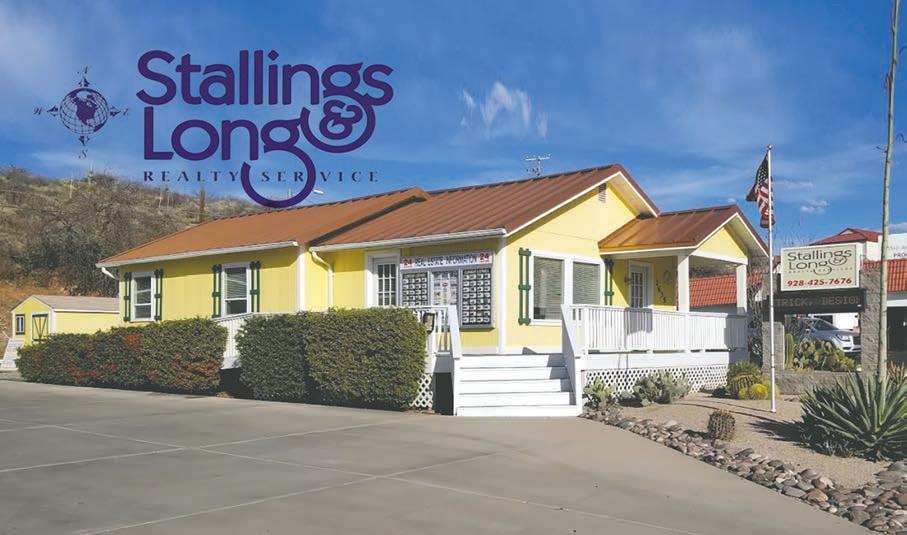
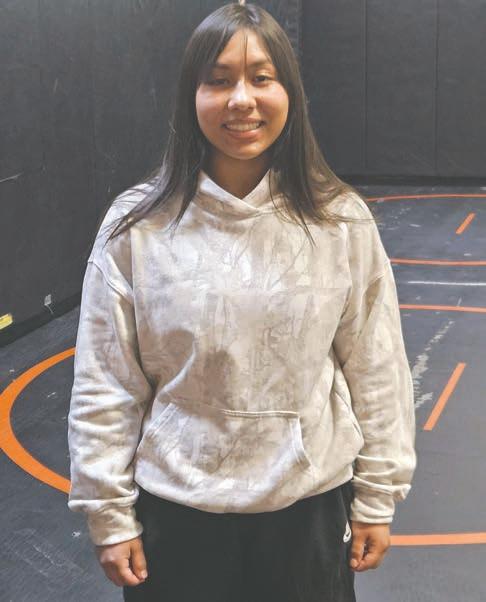









If you need help researching your family's past, are intrigued with rural Arizona history or want to explore our regions mining and ranching history, we invite you to visit the museum or call to set an appointment to work with our trained docents.
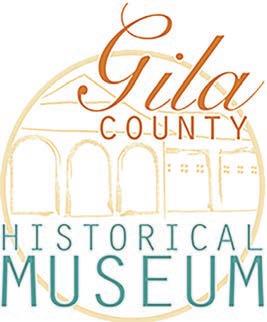
RESEARCH THE PAST BECOME A MEMBER BE A VOLUNTEER
We have several ways you can volunteer, from becoming a greeter (docent), assisting with historical research and requests, or writing grants or media articles. It's enriching work and you'll join others in preserving and promoting our rich heritage.
Our Season Opener! Friday April 25th! Join us for a special Old Dominion Days evening on the Lawn Hamburger Fry 6:00-8:00pm | $10 cash or card. Can be purchased as part of your Event Ticket for any Old Dominion Days event.
Includes a burger, beans, salad, sides and desserts
Special Event: Presentation by Zach Larsen Slideshow presentation on the history of Old Dominion Mine | 5:00-6:00 pm
Sponsored by BHP
19th • 8:00 am - 2:00 pm
One of the biggest and best yard sales in town is back— and it only happens twice a year! This special fundraiser supports the museum, and you never know what treasures you’ll find!



Not only do you support the work of the museum throughout the year, you help preserve the history of Gila County. Get member discounts on museum merchandise. Call for more information on the opportunities at the museum. We'd love to talk to you. We've helped writers, authors, and family members discover the history relating to their interests.

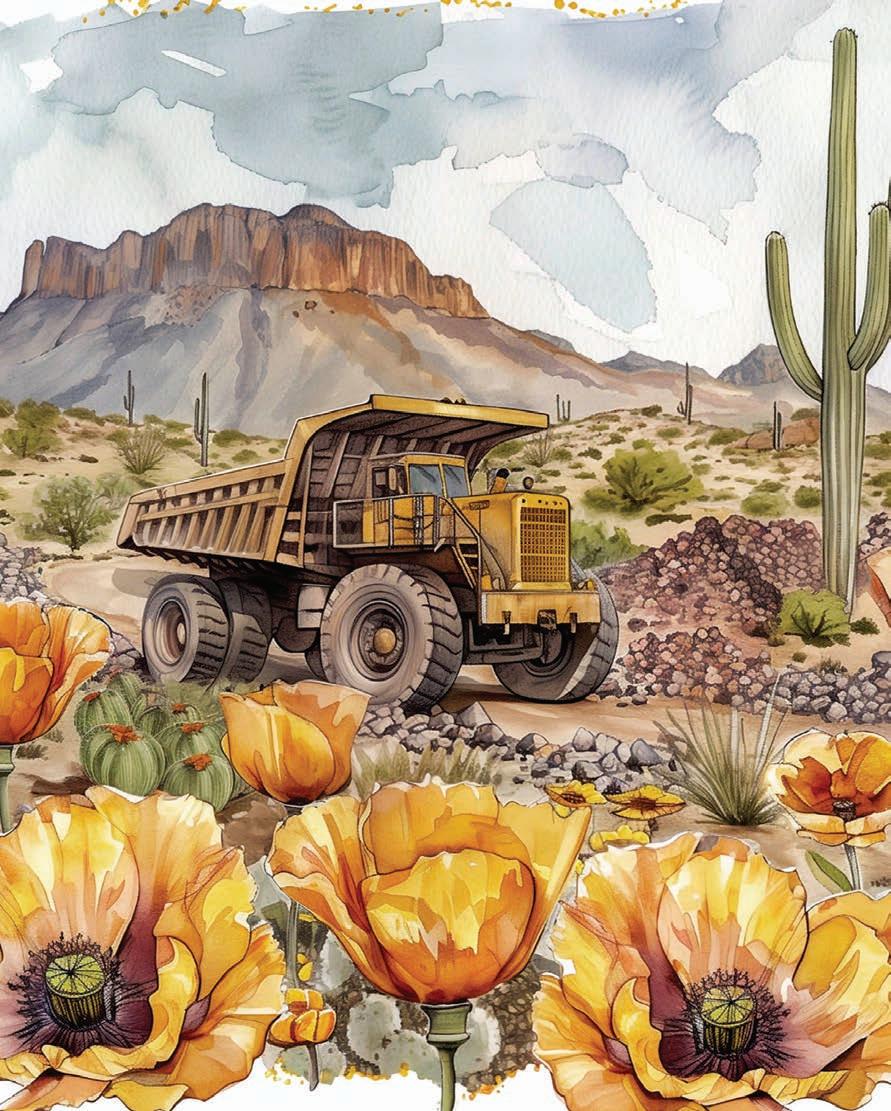




















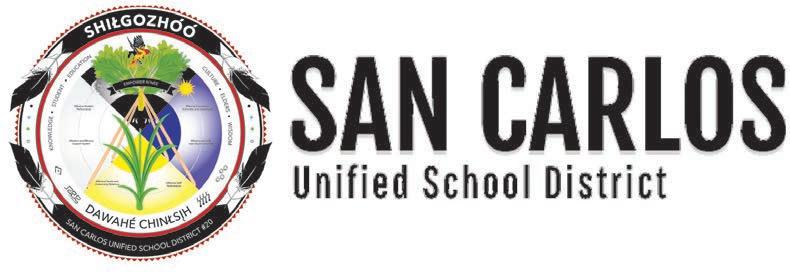

By David Abbott
The San Carlos Unified School District will see a monumental change in leadership as the school year draws to an end, when Superintendent Dr. Deborah Dennison steps down from the post she has held for nearly a decade and passes the mantle to Assistant Superintendent Shawn Pietila, a longtime fixture in the District.
Dennison leaves after nine years at the helm of the SCUSD, but feels she is leaving the District in capable and familiar hands with Pietila.
“It was very important to find someone locally that understands the systems we’ve put in place and has the ability to lead the District and continue to work with the community, the tribal council and the other components necessary to keep the forward movement,” Dennison says. “I’m really proud of the San Carlos Unified School District. I would have never, ever thought that I’d spend this much time here, but I did, and I’ve enjoyed it the whole time. It’s been good to me, and I’m glad the transition plan was approved.”
A member of the Navajo Nation hailing from Window Rock, Arizona, Dennison arrived at the SCUSD in 2016 with years’ of experience as an educator and multiple advanced degrees.
After teaching at high school and community college levels for many years, she became the superintendent of the Window Rock Unified School District in 2002 and was superintendent of the Ganado District from 2005 to 2009. She then returned to Window Rock, serving in her former position for five more years.
In 2010, she was appointed by President Barack Obama to the National Advisory Council on Indian Education and has also served on boards or as chair

In 2023 Dr. Deborah Jackson-Dennison, Superintendent of the San Carlos Unified School District, has been elected to the National Association of Federally Impacted Schools (NFIS) Board of Directors. In her capacity as a Board member, she advocated for school districts receiving Impact Aid and helped guide NAFIS public policy work.
on the National Association of Federally Impacted Schools and the National Indian Impacted School Association, as well as the Arizona State Impact Aid Association, and the Arizona State Superintendent’s Indian Education Advisory Council.
Dennison has earned many other accolades in her nearly four decades in education, but when she started at SCUSD, she thought it would be a temporary position as she built her own business.
“I was in the middle of doing a project in another school setting in Arizona, so I thought, ‘Okay, I can come for about three
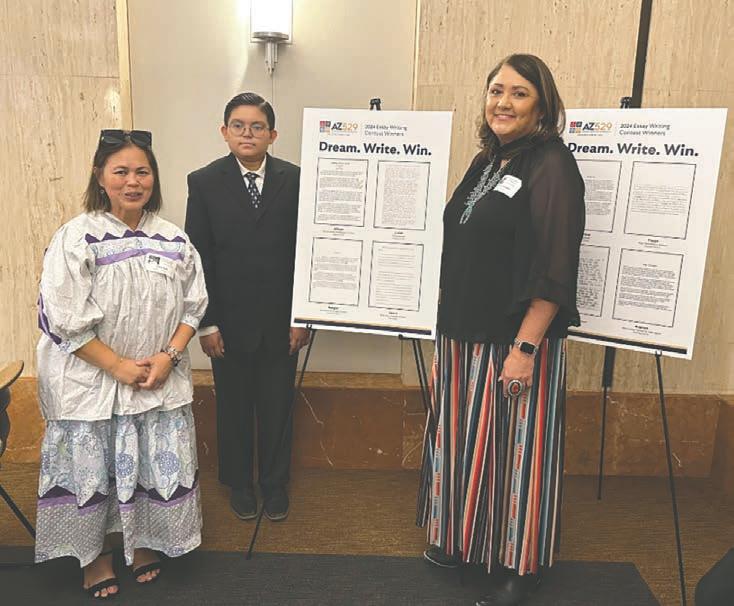
months, implement my survey, and help find a superintendent that can do those things,” Dennison says “I came with the intention of being here for three months, and found out right away where some of the issues are, because San Carlos was very, very low performing at that time, and there was a climate and atmosphere that wasn’t conducive to learning.”
She eventually signed a contract for two years, then three and now she looks back on a significant portion of her career at a school district that has benefitted from
her research and experience.
A big part of her success has been implementing San Carlos Apache culture into the SCUSD curriculum and entering into partnerships in the San Carlos community with agencies such as the San Carlos Apache Tribal Education Department, including Apache College, and the San Carlos Apache Health Corporation.






Through those partnerships, Dennison has implemented a dual credit program for high school students; the kindergarten Apache immersion cohort at Rice Elementary, as well as designing and implementing the middle school intervention concept.
In addition to creating a cultural space that encourages students to embrace their San Carlos Apache heritage, Dennison has also worked to identify the District as a provider of resources for its students and their families.
The Parent Educator Program offers help to parents and student guardians to learn their roles, and the Cultural Success Coaching Program, which was established as a response to the COVID pandemic, helps students who might need counseling or other resources such as food and clothing.
Her “systemic reform approach,” known as “Empowering Our N’nee People the Brave Way,” has been a guide for the District’s strategic planning and is designed to ensure student success.
The systemic reform approach focuses on changing the system, rather than the students. Her strategy is based on tools she developed through her doctoral research that designs curriculum around community feedback incorporated into external directives.
Much of it was inspired by her father’s career in education and his belief in tribal identity as a cornerstone of culture.
“Tribal sovereignty and tribal identity being the utmost important thing we need to instill in our children in schools,” Dennison says. “For them to be successful in this society, they have to have that strong foundation and not feel like they’re not as good as anybody else.”
Her departure will affect many people she has worked with over the years, including her Executive Secretary Evelyn Hinton, who has worked with Dennison in multiple districts for about 26 years.
“I’ll miss her leadership and how she’s encouraged administrators and students and pushed them to excel to where we’re at now,” Hinton says. “I’m hoping it will continue under Mr. Pietila.”
Korinne Bullock, Principal at San Carlos Middle School, has been with the District since 2011 and has seen the progress the schools have made, thanks to Dennison’s leadership style.
“One of the biggest things that has been most impactful, is that she didn’t come in with a top down approach,” Bullock says. “She came in and immediately got people from all parts of the district involved, including the community and the parents, in what we want to see for the kids here in San Carlos, and how we were going to all help them be successful.”
At its February 12 meeting, the SCUSD Governing Board approved its Superintendent and Chief Finance Officer Leadership transition plan that promoted Pietila to superintendent, but also promoted Rice Intermediate Principal Nicholas Ferro to take over as the District’s chief financial officer.
His promotion is part of the District’s

goal to promote from within as a means to increase retention with people who understand the school and its mission.
Ferro, whose 9-year tenure coincides with Dennison’s, credits her with his move to an administrative position and longevity in the District. He started as a school counselor, became an associate principal and for the past five years has been principal at Rice Intermediate.
“It’s very rewarding and I credit her for the knowledge I’ve gained and her belief in me, that I can take on those expanded roles, and thank her for it,” Ferro says.
“It’s weird for me to leave the building I’ve been principal at now for five years, but I know that we’re putting the right pieces in place to sustain the success that she created.”
Dennison says she will return to the Hatch, New Mexico ranch she owned with her late husband and spend more time with their children running the operation.
“I’m going to go home and see the next opportunity that opens for me, but I’m not going to force something. I’m just gonna see what happens,” Dennison says. “I’ll be available and I’ll stay connected with Shawn on a part time basis, but not physically here, because I don’t want to overshadow him.”
Pietila came to San Carlos in 2008 and spent 11 years at the high school, coaching football and track and field. He returned to the District at the beginning of the current school year after four years as Athletic Director of Miami High School and one year as principal after the departure of Glen Lineberry in 2023.
“Dr. Dennison has set programs in place that have lifted the spirits and standing of the San Carlos Unified School District and I am grateful to her for her mentorship,” Pietila says. “I am honored to be given the chance to build on her work that has benefited so many in our community.”


Education Forward Arizona sounds alarm over looming Education funding disruptions by Education Forward Arizona Feb. 23, 2025 – Arizona has deprioritized education funding through a series of choices by elected leaders over the past two decades. Today, Arizona is more reliant on federal funding than most other states. Arizona’s public schools receive about $2,090 per pupil in federal funding, which represents approximately 20% of the state’s total K-12 education funding. Arizona ranks among the top five states with the highest percentage of school revenues derived from federal funding. Closing the U.S. Department of Education without continuing funding will cause an economic and educational disaster for Arizona. It will upend our entire education system, particularly our public elementary and high schools, which supply our state with a skilled workforce. Any cuts will be devastating for schools across the state, especially rural Arizona communities, which are increasingly sustained by federal funding.

Arizona’s lack of investment has also made students and their families overly reliant on federal student aid funds like Pell Grants, Federal Work Study, and Federal Student Loans to pay for education and training after high school – making them highly susceptible to any interruption of the Federal student aid system. Therefore, any disruption to the FAFSA form, which is administered by the U.S. Department of Education, will create chaos for students and families relying on it – preventing thousands from starting and completing programs that will prepare them to succeed in a high-skilled workforce. Already, $50 million in promised grants – including $1 million or more slated for Arizona to assist students in filling out the FAFSA have not arrived, leading to increased concerns that very real disruptions are coming.
Arizona has everything to gain—billions in economic growth, stronger communities, and a more skilled workforce—when every student regardless of their zip code has access to a high quality education and they have the support needed to continue their education beyond high school. Research conducted by Helios Education Foundation and Education Forward Arizona shows that increasing higher education enrollment by just 20% per cohort could add more than $5 billion to Arizona’s economy each year. That’s why the dismantling of the U.S. Department of Education without a viable and immediate alternative will cost billions today and in the future.
Education Forward Arizona is a statewide education advocacy organization dedicated
by David Abbott, writer Globe
Miami Times
Trump Administration is hollowing out the Forestry and National Parks services, leaving residents of the Copper Corridor vulnerable to the vagaries of wildfire as well as reduced services at recreational sites.
Many of the people leaving—whether by coercion or voluntarily—are taking years, if not decades, of institutional knowledge out the door with them as thousands of jobs evaporate overnight.
The cuts, many taking place on February 14, Valentines Day, were announced two days after the deadline to respond to the “Fork in the Road”—deferred resignation—email sent to more than 2 million federal employees on January 28 in an attempt to get them to resign with the promise of several months of pay in exchange.
The unprecedented, and possibly illegal, action will impact every function of the agencies from park operations and law enforcement to firefighting, across the Western U.S.
The targeted employees perform vital research to protect natural and cultural resources; perform search and rescue operations; clear trails, clean bathrooms and ensure the parks are in serviceable condition for tens of millions of yearly visitors.
Given the difficulties maintaining a trained and competent workforce, Trump’s recent efforts to slash the number of federal employees is creating a ripple effect that will impact populations across the U.S., particularly in vulnerable communities, for years to come.
In early February, in its efforts to “cut waste” in federal spending, the administration announced the USFS would cut about 3,400 jobs and the National Park Service will cut about 1,000. The cuts will affect mostly probationary employees, some that have years in service that may have been transitioning to other positions.
The cuts locally could have dangerous effects in a region that has an annual fire season and is surround by about 3 million acres of national parks and public land in the Tonto National Forest alone.
While the cuts exclude law enforcement and fire personnel, as well as 5,000 seasonal workers, they represent about 10% of the USFS and about 5% of the NPS workforces.
“When taken together, the cumulative impact of these actions and orders on our national parks and park staff could be devastating and long-lasting,” National Park Conservation Association President and CEO Theresa Pierno said in a widely distributed statement. “In the long term, buyouts could lead to a loss of expertise and experience. And when national parks struggle, gateway communities and economies feel the effects too.” READ MORE at globemiamitimes.
How Safe and Sustainable is the New Disc Golf Course
I have been interested to watch the addition and growth of the Ice House Canyon Disc Golf Course. The new course at the Besh Ba Gowah Community Center Park was built in a waterway that experiences periodic flash flooding. The disc golf community has created an inviting space for outdoor recreation. With chairs and benches in place, park users might confuse the flood zone with a safe place to hang out. To my knowledge, there have been warning signs posted to watch for flying discs, but no additional signage to warn of flash flooding. I am also concerned about the addition of materials and infrastructure that could wash downstream during a rain event, clog up at the next bottleneck, and create conditions for upstream flooding in the canyon. This could create an emergency and put the lives of residents and emergency workers at risk. The wash is home to many culturally and environmentally important native species of plants and animals. Was there an environmental impact study conducted before the installation of the course? I am curious about the planning and thoughts behind using this particular location for a disc golf course. I am concerned that the enthusiasm to create this really cool thing has allowed us to turn a blind eye to the regulations and planning processes that help keep us safe and protect nature.
– Ice House Canyon resident interested in sustainable and safe recreation
Short-term rentals, like those offered through platforms such as Airbnb, have become a hotly debated topic in local communities, including ours. Critics point out the potential for reduced housing availability and rising real estate prices. However, I believe it is crucial to separate two distinct scenarios: short-term rentals owned by local residents versus those controlled by large, corporate entities. As someone who has witnessed both the positive benefits of locally owned vacation rentals and the concerning trends associated with corporate buyouts, I offer this perspective to advocate for a more nuanced approach.
Local homeowners, like me, who offer short-term rentals often rely on the extra income to keep up with mortgage payments and property taxes and Residents rely on this supplemental revenue stream to counteract the challenges many small-town communities face—such as lower incomes and fewer job opportunities—and to ensure they can maintain and upgrade their homes, which would otherwise be difficult without the extra source of income.
Platforms like Airbnb serve as a mechanism to earn money legally, bolster the local economy, and invest in community improvements. When neighbors own these properties, they typically invest more care and concern into the home’s upkeep and the quality of the guest experience. After all, they live in the same neighborhood and are vested in preserving its character and safety.
On the other hand, large real estate corporations or out-of-town investors who buy up properties can often outbid local families and contribute to rising property values and less affordable housing for those who live here. Additionally, absentee landlords frequently do not maintain their properties with the same personal touch or sense of responsibility as local owners, and a revolving door of unfamiliar renters with little to no personal relationship to property owners affects local neighborhoods and communities alike.
This detrimental effect prompts a desire to legislate a fix.
The logical step forward is not a blanket ban on short-term rentals but rather thoughtful regulation that distinguishes between individual homeowners and corporate conglomerates. City and county leaders might consider policies like residency requirements for short-term rental permits, limits on the number of properties a single entity can manage, or tiered tax structures incentivizing local ownership. These measures could help ensure that the benefits of short-term rentals—such as increased tourism, extra income for families, and funding for local improvements—remain in the community, while limiting the harmful effects of corporate real estate “takeovers.”
Ultimately, short-term rentals are not inherently bad. If managed correctly, they can serve as an economic lifeline for local residents and enhance the vibrancy of our neighborhoods. But if local governments fail to differentiate between owner-occupied, small-scale rentals and large corporate holdings, we risk seeing entire communities transformed by profit-driven investors with no roots in our town. It’s time to support smart policies that protect residents’ ability to share their homes responsibly while preventing the unchecked expansion of corporate-owned real estate. By doing so, we can preserve the charm, affordability, and neighborly spirit that makes our community a place we all love to call home.

– A Local Air BnB Host and Long Standing Resident
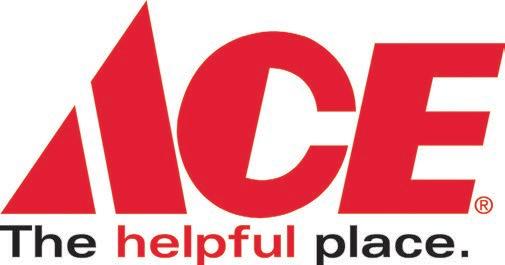







MORAN GEORGE THINKA SR., August 26, 1958 –February 28, 2025, age 66, of San Carlos, passed away at San Carlos Apache Healthcare in Peridot. (LM)
AURORA RIVERA RUIZ, October 16, 1932 – February 26, 2025, age 92, of Superior, passed away. Aurora taught in Superior Schools for many years. She was originally from Glendale. (BM)
JESUS GERMAN “CHUY” OLMOS, March 20, 1934 –February 26, 2025, age 90, of Kearny, passed away. Chuy worked primarily as an assayer at Kennecott Copper/ASARCO for 39 years. He was originally from Riverside, California. (BM)
MOLLY BENAVIDEZ ORNELAS, February 1, 1937 –February 26, 2025, age 88, of Miami, passed away. Molly served as director of a beauty college before working at Miami Inspiration Hospital as a CNA for 10 years. She was originally from Rowe, New Mexico. (LM)
MILDRED JANE BAKER, May 14, 1932 – February 24, 2025, age 92, passed away. (BM)
ANNIE MADRID, December 3, 1940 – February 20, 2025, age 84, passed away. Annie was the office manager at Our Lady of the Blessed Sacrament Church for 45 years. She was born in Miami. (BM)
MARK ANTHONY ATCHLEY, February 18, 1961 –February 20, 2025, age 64, passed away. (BM)
JAMES COUNTER, June 12, 1960 – February 19, 2025, age 64, passed away. (BM)
JOHN HERCHEL CHISM, January 28, 1943 – February 19, 2025, age 82, of Globe, passed away at Haven Healthcare. John served in the Air Force, then as a carpenter for Van Dyke Construction, and later at Inspiration, Cypress, and Phelps Dodge in a 25-year mining career. (LM)
MARY LOU MOSS, June 24, 1952 – February 19, 2025, age 72, of Globe, passed away. Mary Lou was an RN who served communities in Arizona and New Mexico for many years. She was originally from Wyoming. (LM)
JO ANN KING, August 22, 1953 – February 18, 2025, age 71, of Peridot, passed away at Mercy Gilbert Medical Center in Gilbert. (LM)
ALTON “BUDDY PETE” TOLLETT, October 10, 1936 – February 15, 2025, age 88, passed away. Buddy Pete was a miner, a veteran, a surveying engineer and above all a Cowboy. He was originally from San Angelo, Texas. (BM)
MARIA CONSUELO “CHELLO” KOLBECK, August 24, 1963 – February 14, 2025, age 61, passed away at Chandler Regional Medical Center. Chello worked at ASU for many years as a classroom scheduling coordinator. She was born in Miami. (LM)
LAWRENCE “LAZO” LOPEZ CONTRERAS, August 18, 1937 – February 13, 2025, age 87, of Globe, passed away at his home. (LM)
STEPHANIE RENEE THORNE, July 26, 1977 –February 12, 2025, age 47, of Peridot, passed away at Banner Desert Medical Center in Phoenix. (LM)
MARIA DEJESUS YANIK, August 5, 1933 – February 11, 2025, age 91, of Miami, passed away at the Mayo Clinic in Phoenix. (LM)
SUSAN MARIE MOYA, February 22, 1957 – February 9, 2025, age 67, of Globe, passed away at Banner University in Phoenix. (LM)
KEVIN WAYNE ASHFORD, June 20, 1970 – February 9, 2025, age 54, of Globe, passed away at his home. Kevin worked at Hensley Beverage as sales team leader and also coached basketball and baseball. He was born in Miami. (LM)
NICHOLAS R. SALAZAR SR., September 10, 1942 –February 7, 2025, age 82, passed away. Nick retired from BHP Mining but also worked many other places, including as a manager at Safeway. He was born in Globe. (BM)
ANGELINA HETRICK, May 25, 1949 – February 6, 2025, age 75, passed away. (BM)
EUGENIO G. GONZALEZ, March 30, 1942 – February 6, 2025, age 82, of Hayden, passed away. Gene worked at Kennecott Copper/ASARCO for 36 years. (BM)
ROBERTA VARGAS CONTRERAS, August 23, 1966 – February 6, 2025, age 58, passed away in Willis, Texas. She pursued a 20-year career in banking before becoming a full-time mom. She was originally from Superior. (BM)
HYACINTH WILSON, August 27, 1957 – February 6, 2025, age 67, of Peridot, passed away at CVRMC. Hyacinth worked as a seasonal firefighter for B.I.A. Forestry. She was born in San Carlos. (LM)
ANTHONY JULIAN RAKOCZY, June 4, 1944 –February 6, 2025, age 80, passed away at his home. He served in the Navy during Vietnam, then worked in building mobile homes, fabricating sheet metal, and later for the USPS in Apache Junction for 27 years. He was originally from Hamtramck, Michigan. (LM)
RICHARD HALE SHORT, June 4, 1960 – February 4, 2025, age 64, of Globe, passed away. (LM)
TROY JAY CASE, December 2, 2001 – February 3, 2025, age 23, of Peridot, passed away in Chandler. (LM)
TEE EDWARD CURLEY, September 25, 1984 –February 2, 2025, age 40, of Peridot, passed away at CVRMC. Tee was born in San Carlos. (LM)






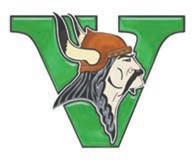


Opening Day of Globe Tigers
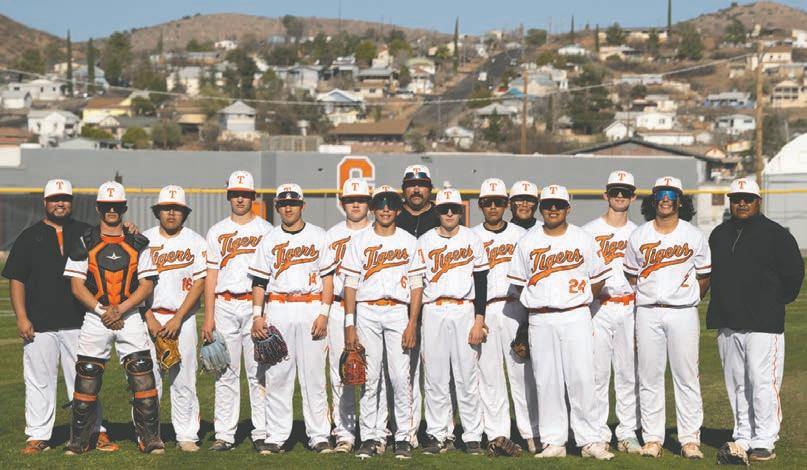



Farewell to KIKO Reception & Exhibit
March 1
Gila Historical Museum



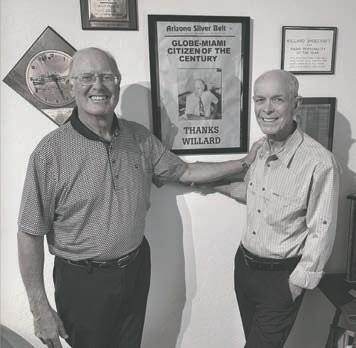


Globe Rotary Casino Nite February 22

Cobre Valley Center for the Arts
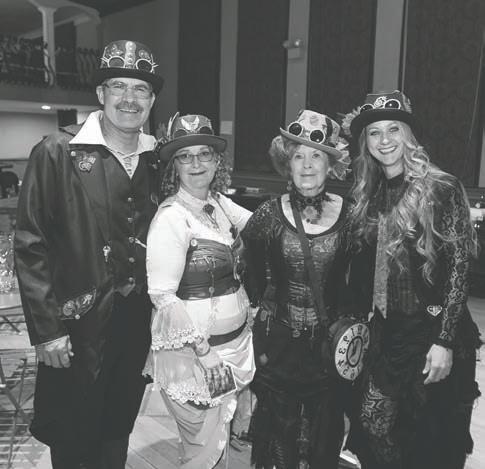








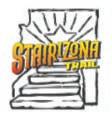
We are in the process of redesigning our map pages.
But baseball distracted us!
Beginning April, the large map will be available in an 11 x 17 laminated version that local businesses can use to direct visitors around the area.The new maps in the paper will focus exclusively on the Historic Downtown Districts. Map ads are available for $75/ea with a 6-month contract, helping to bring attention to the type of products or services you offer. Contact Linda Gross for details: (928) 961-4297 gross@globemiamitimes.com.

